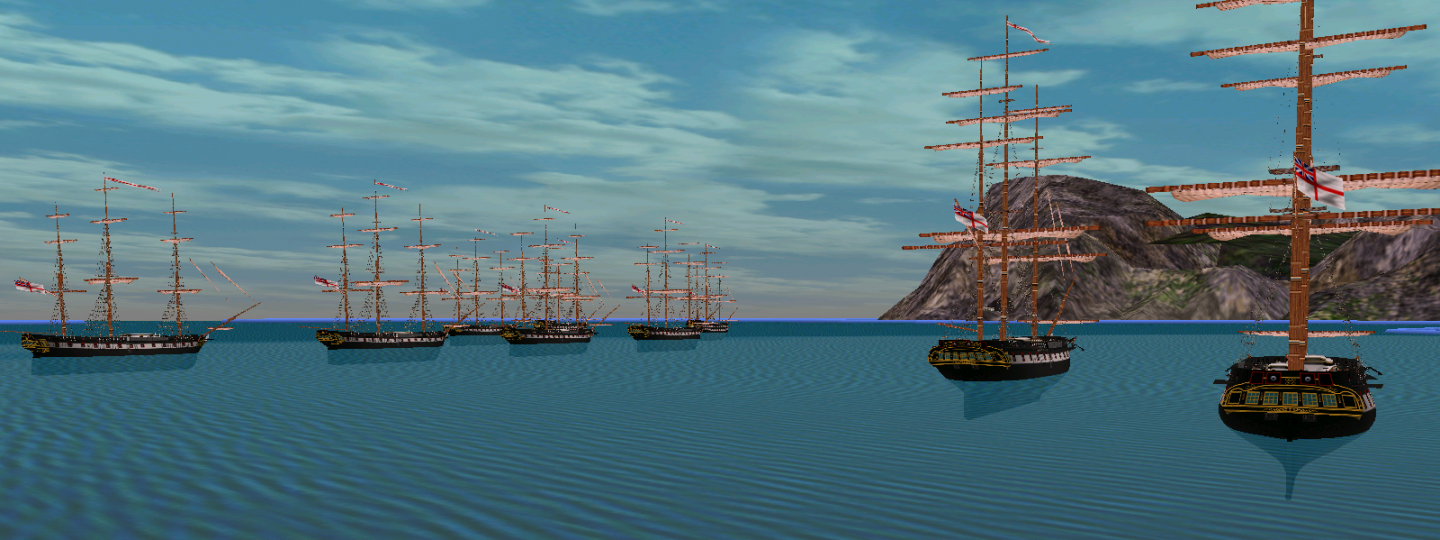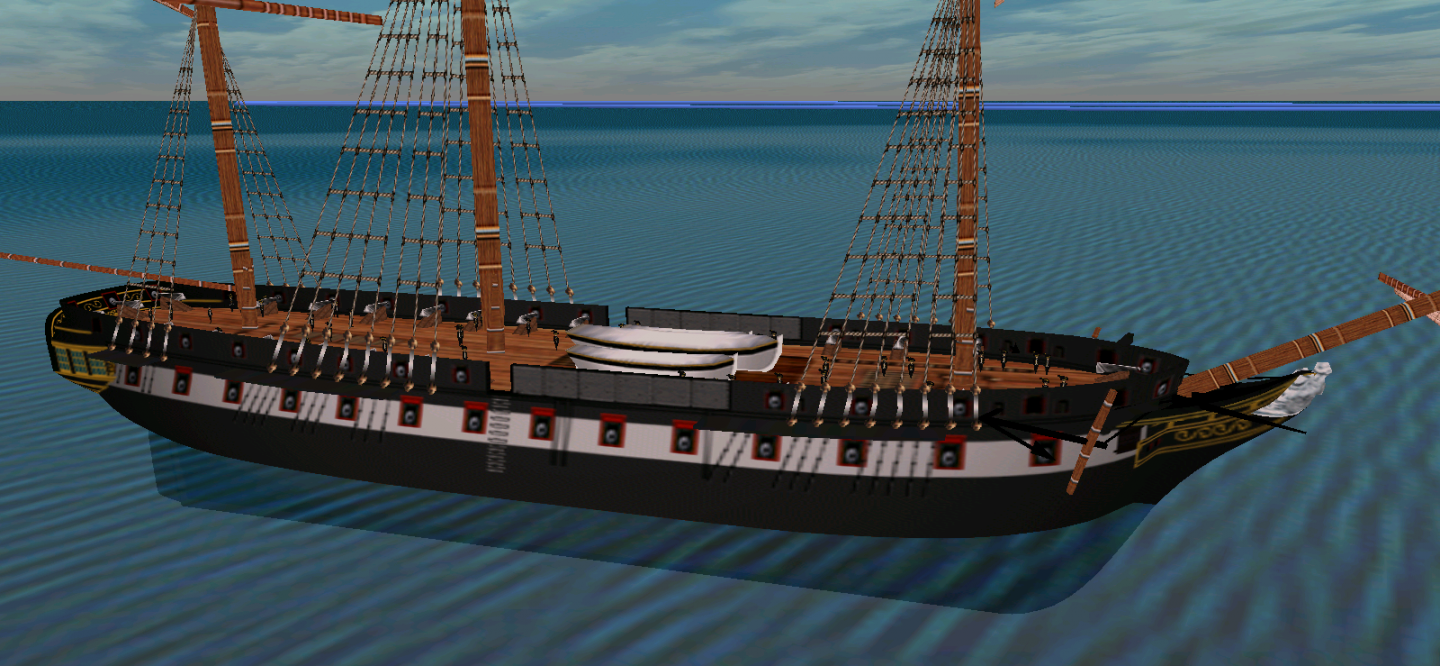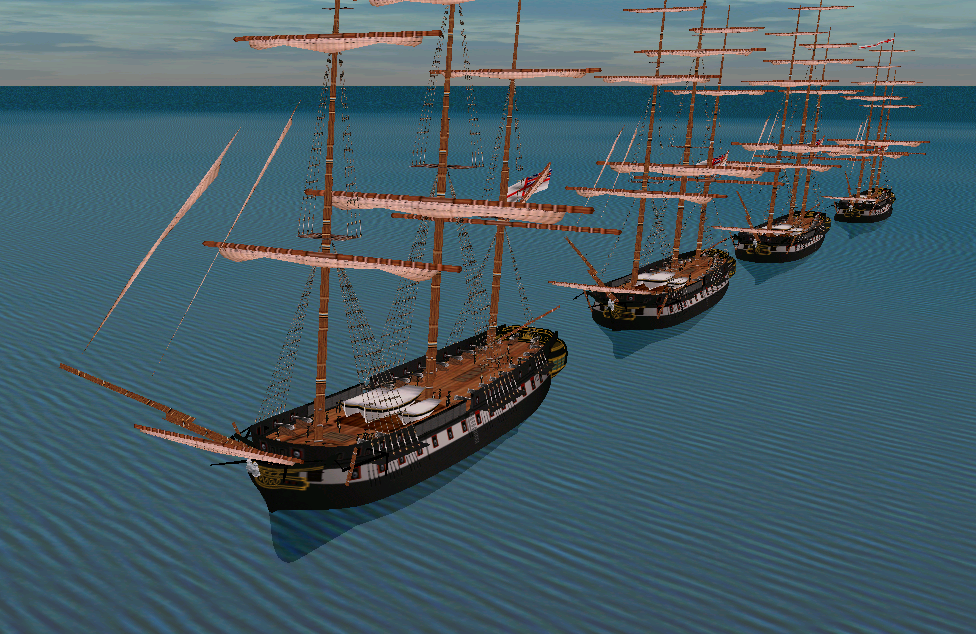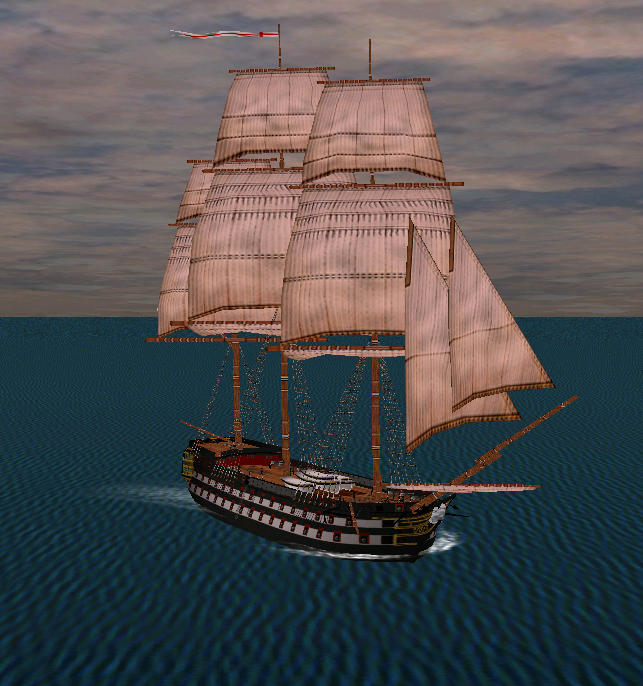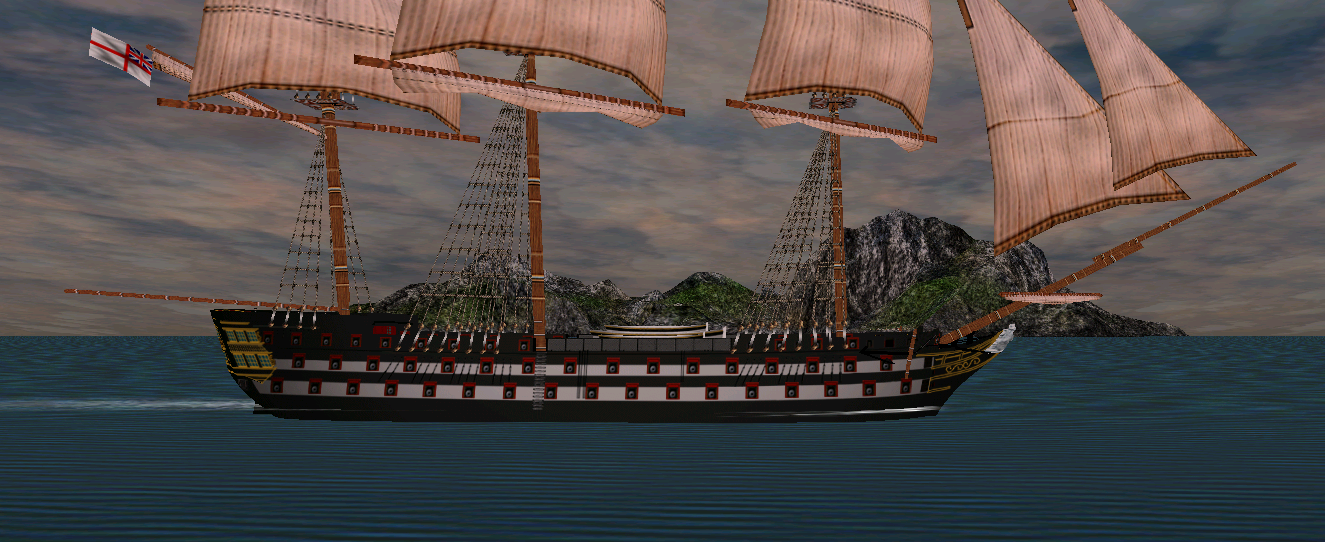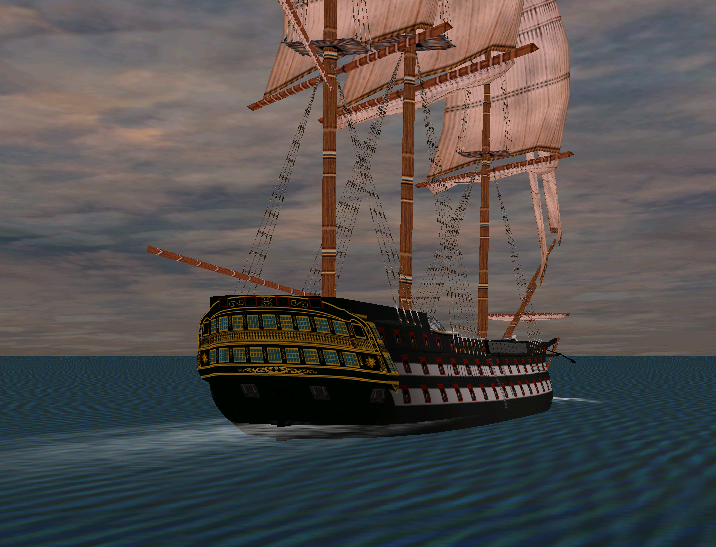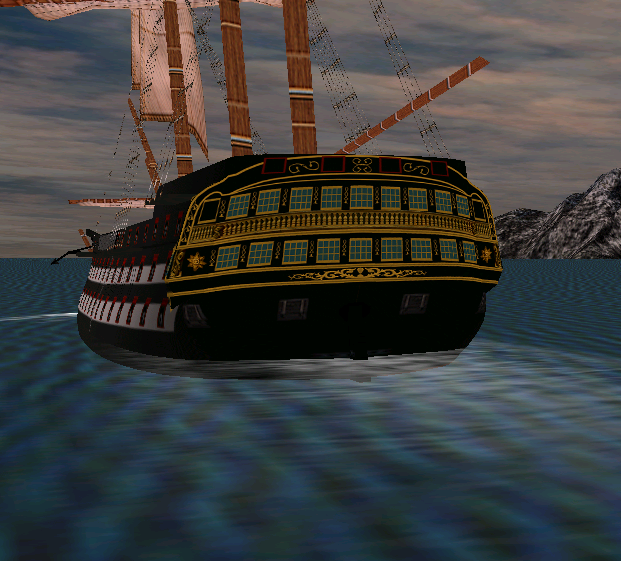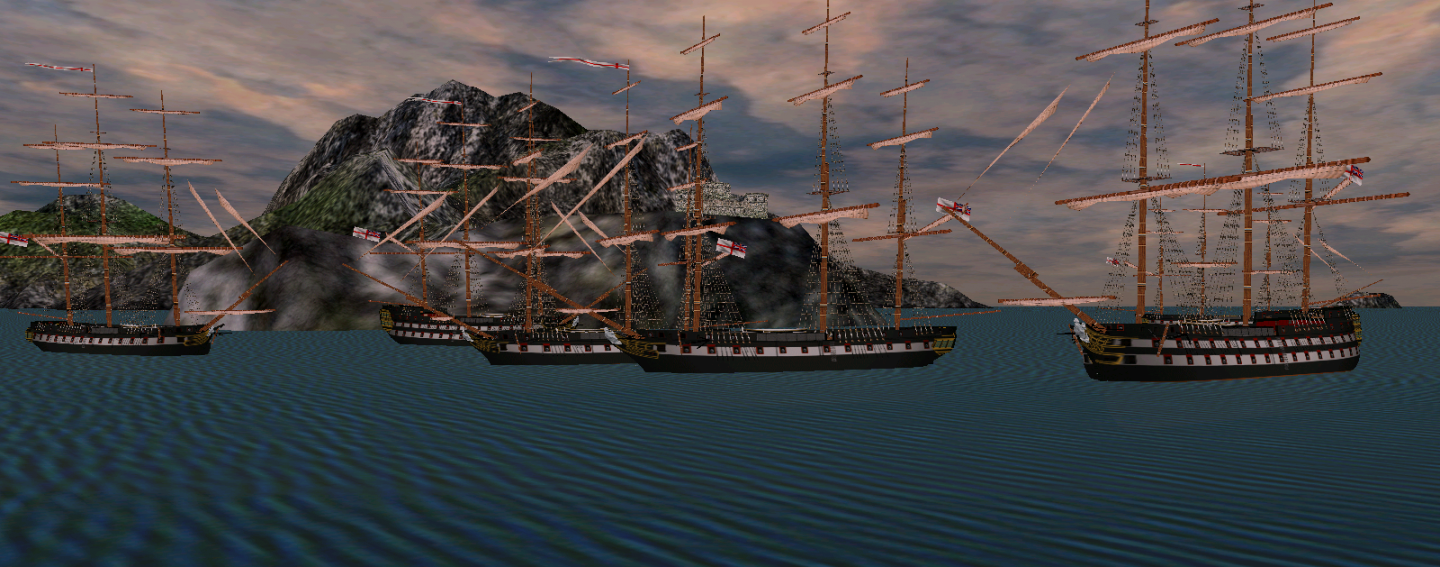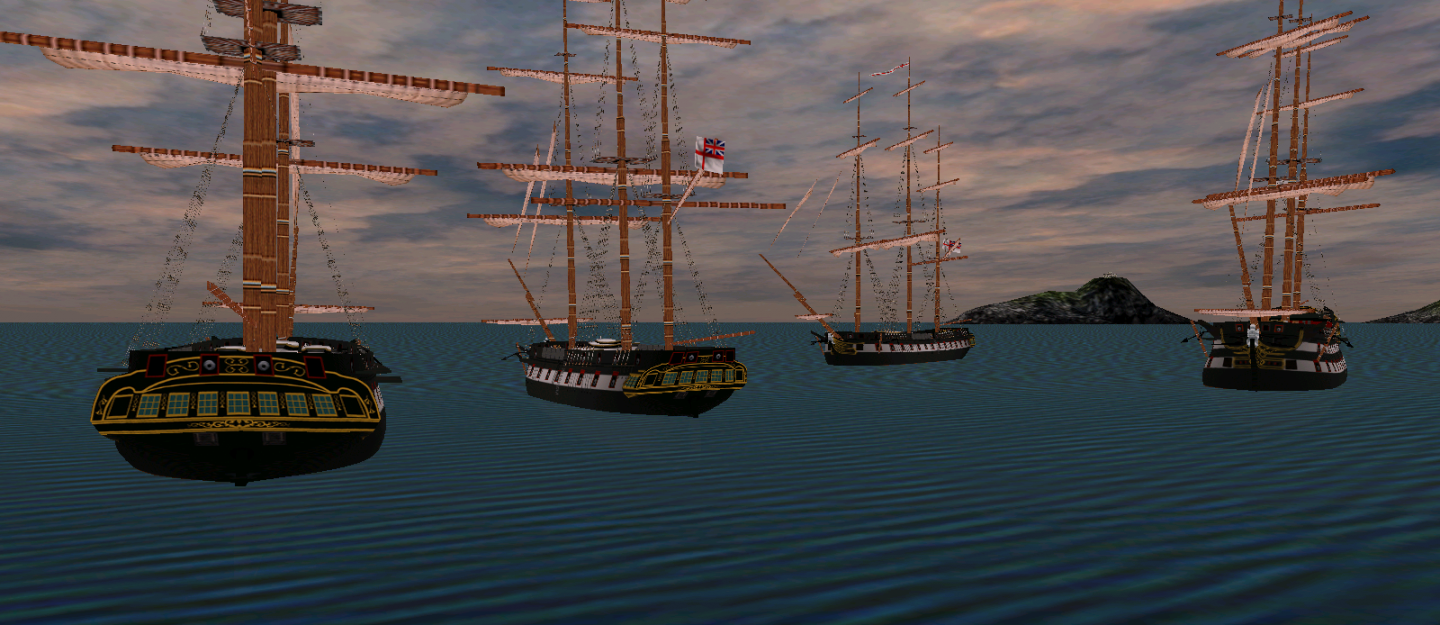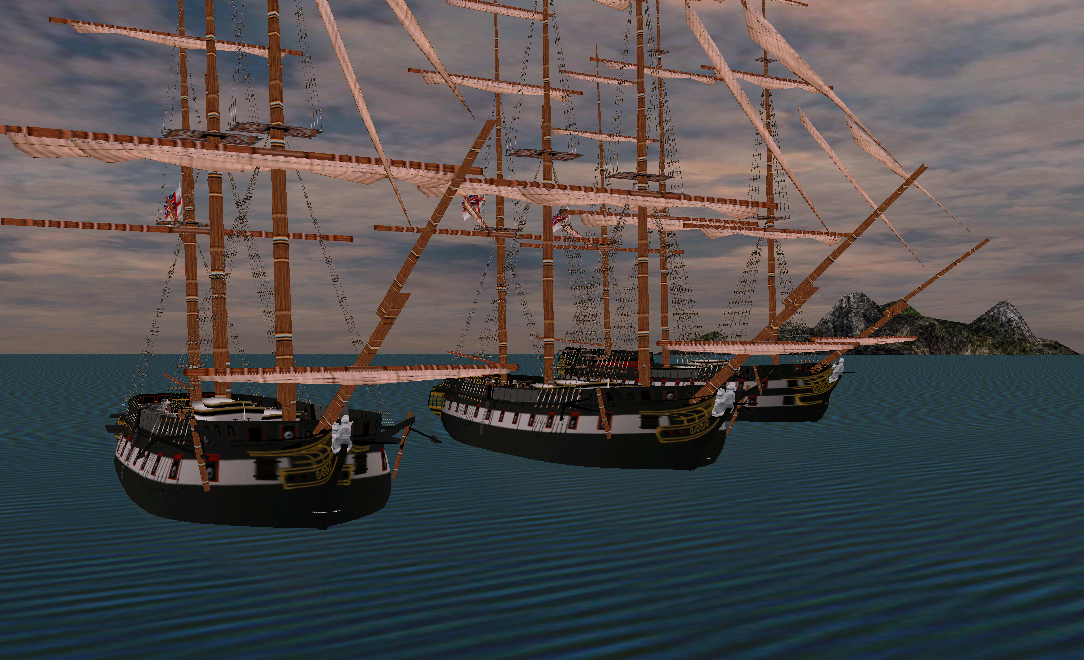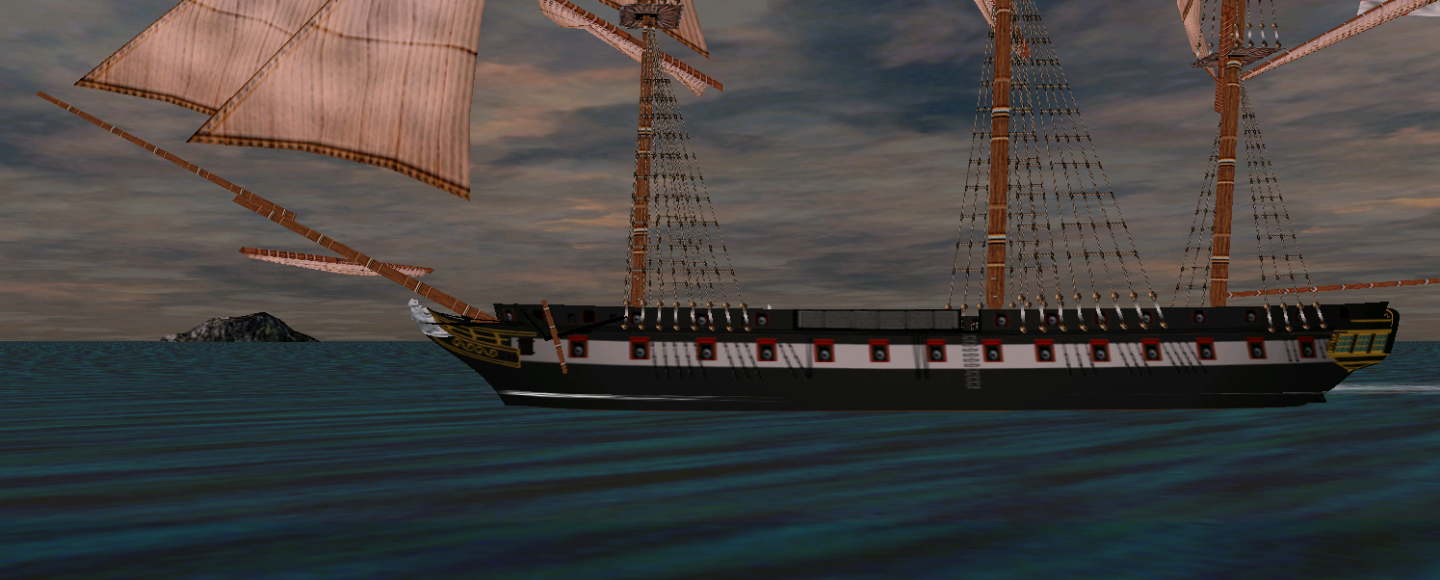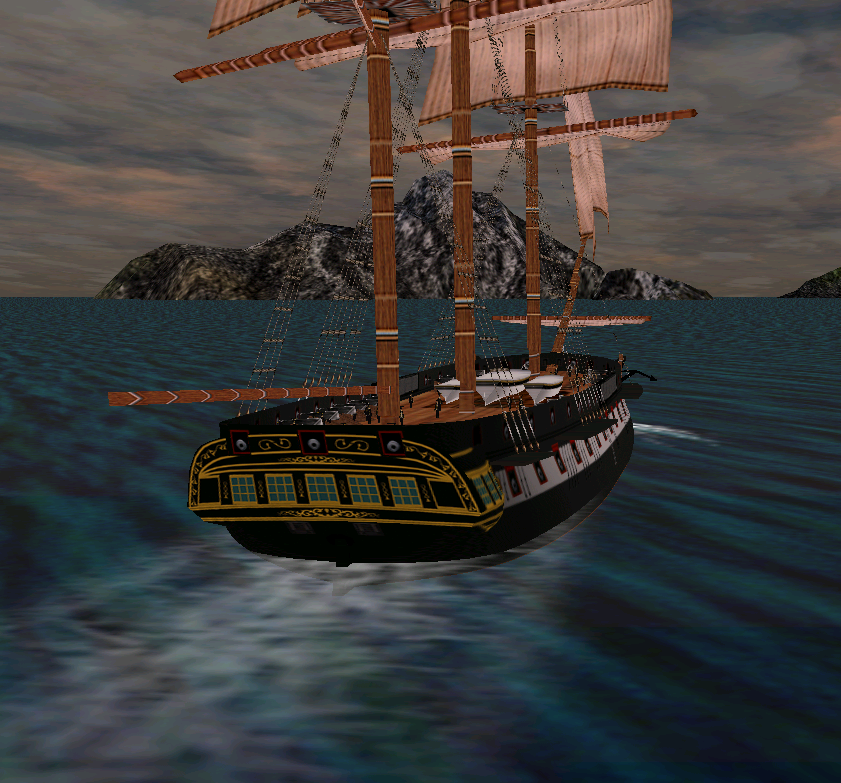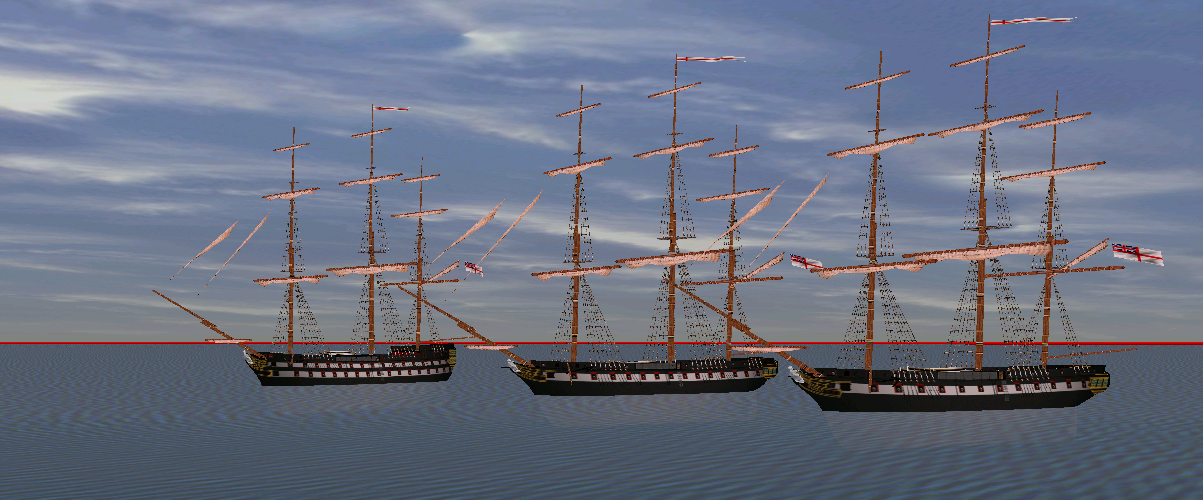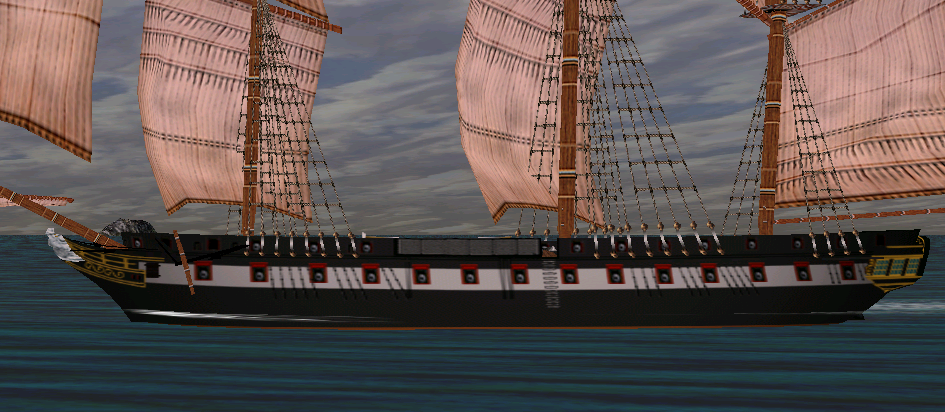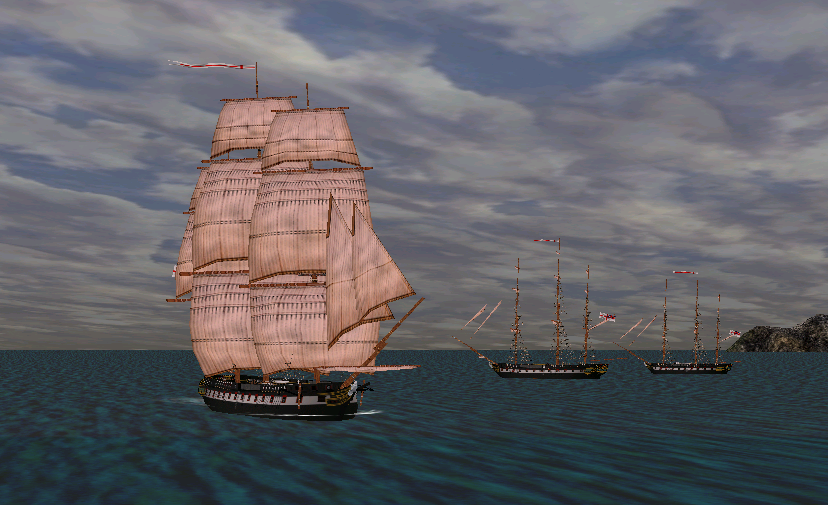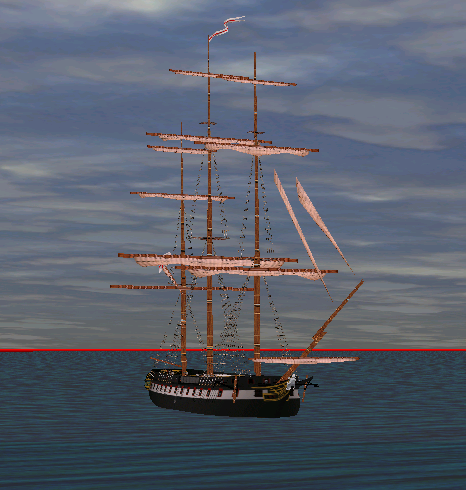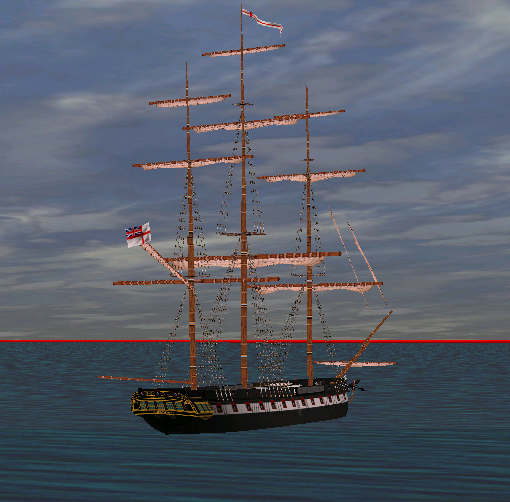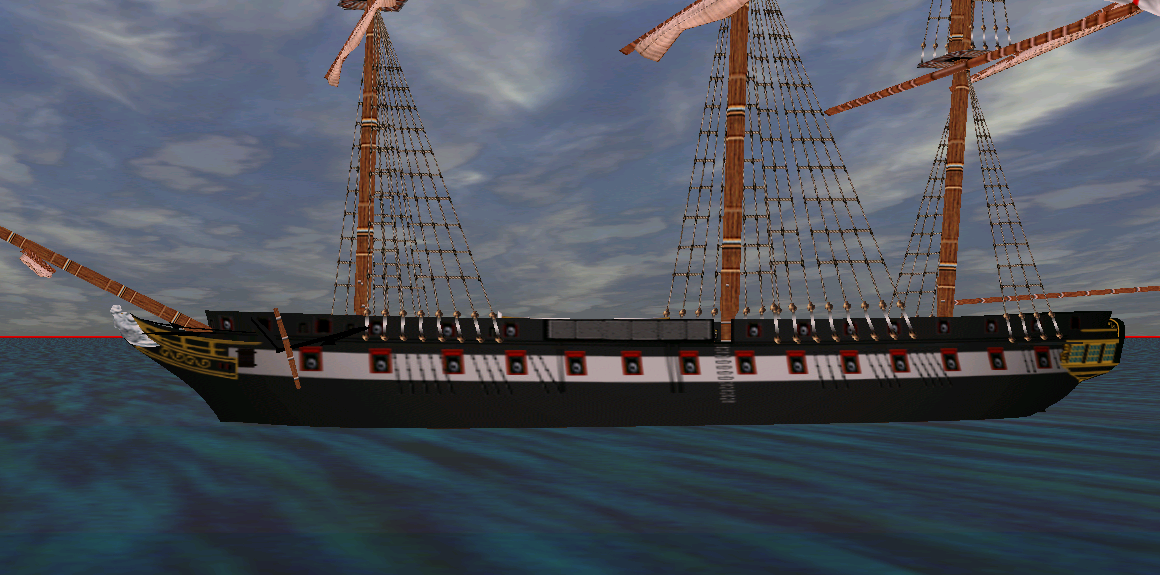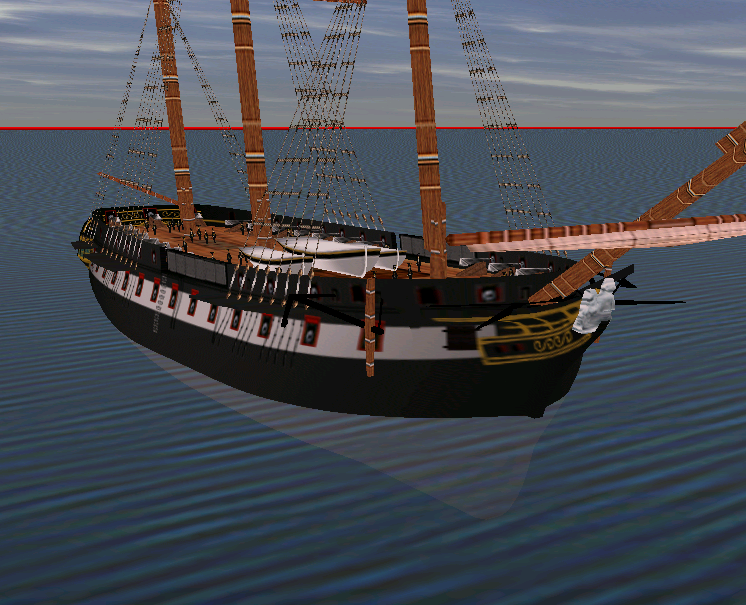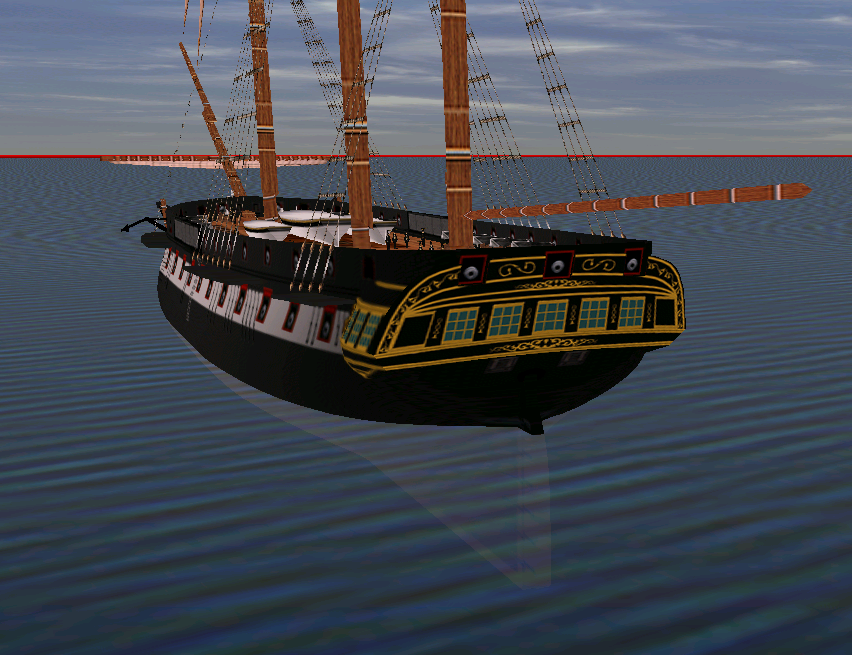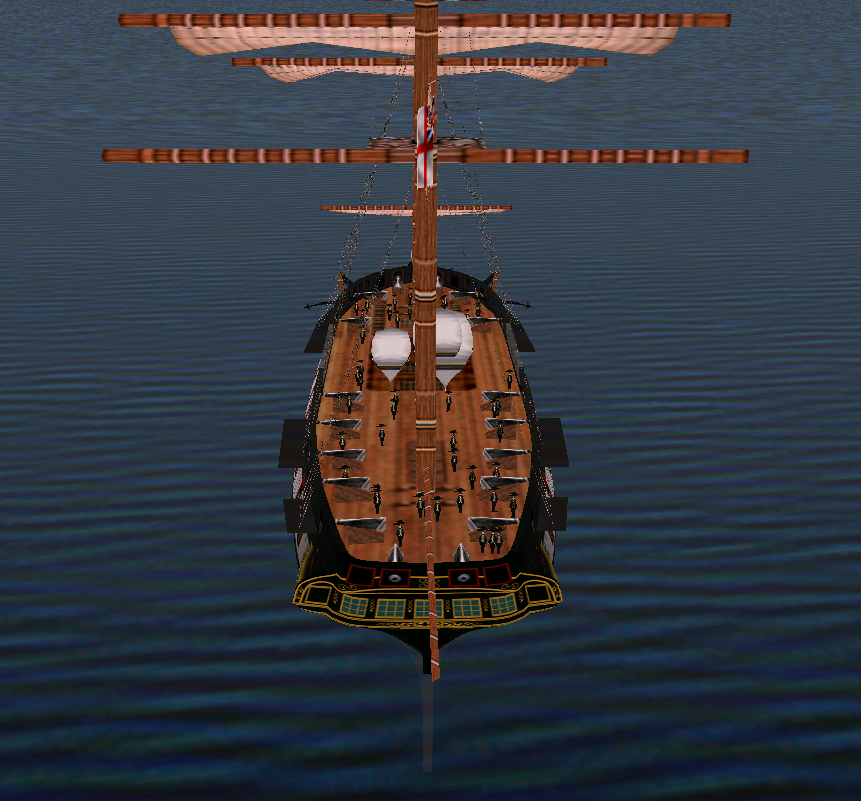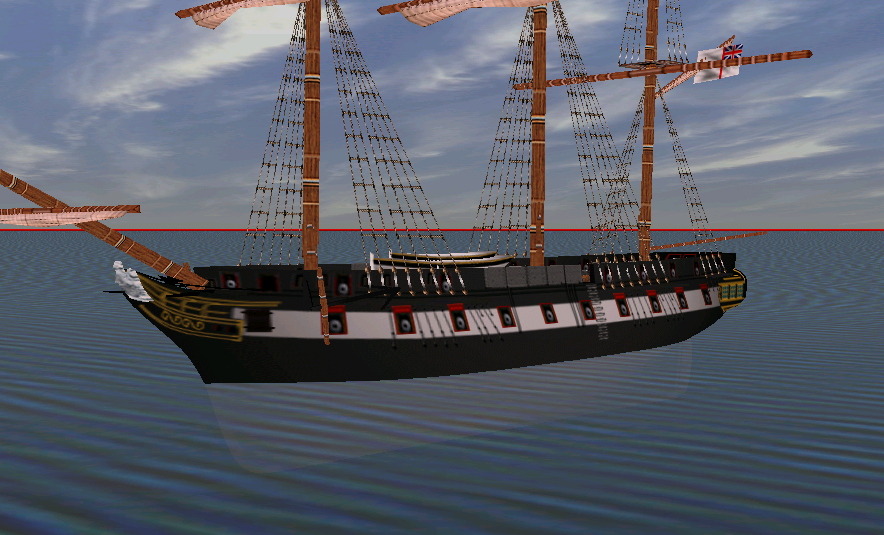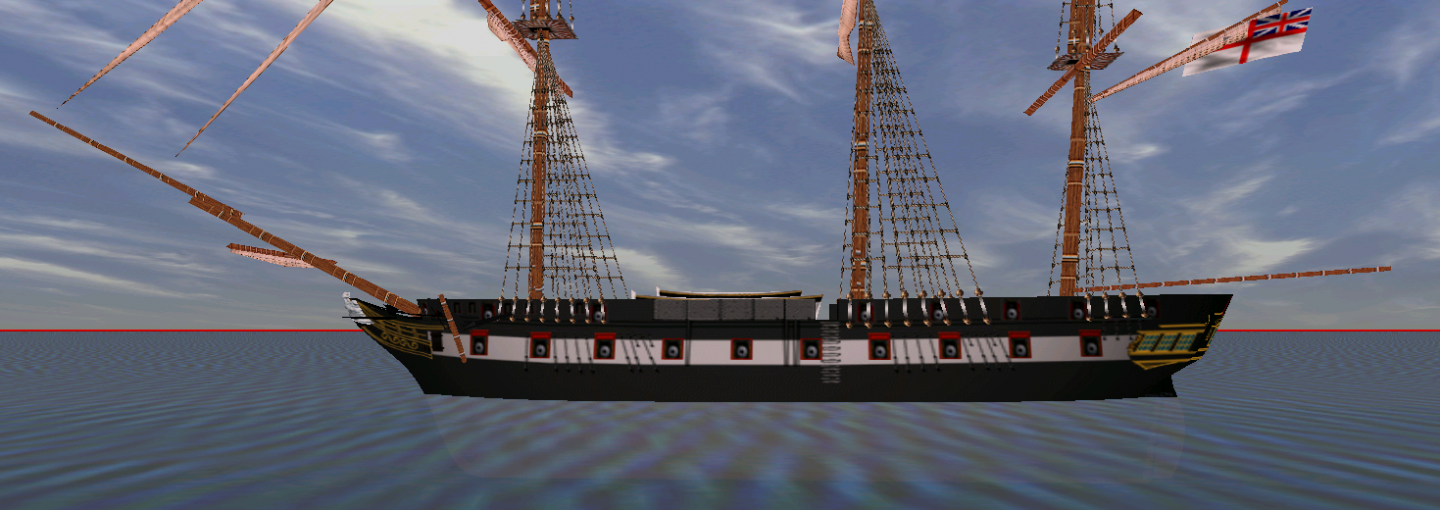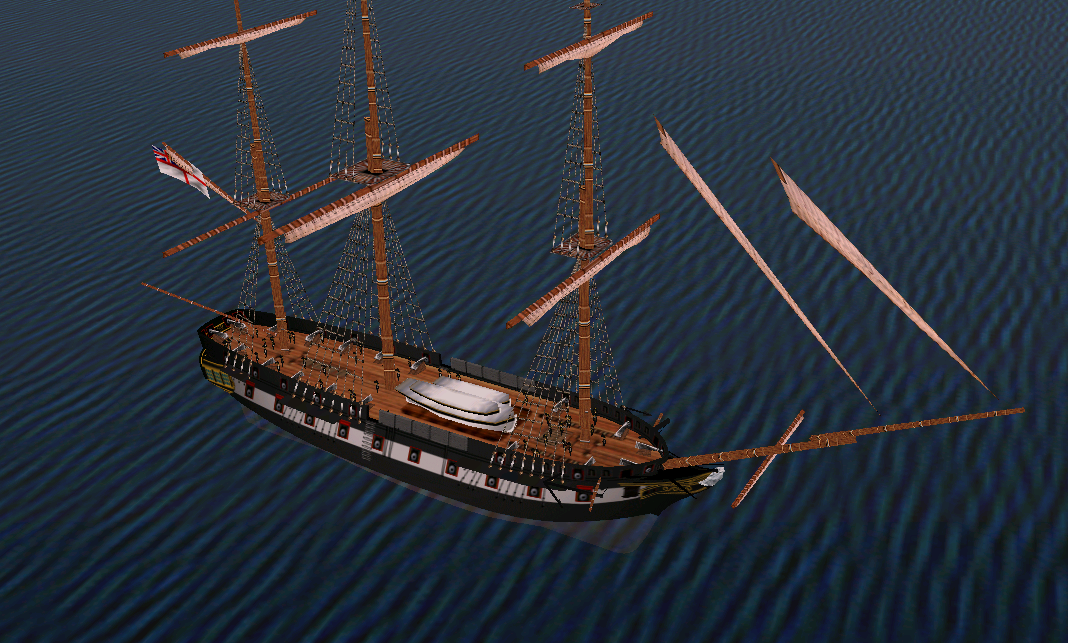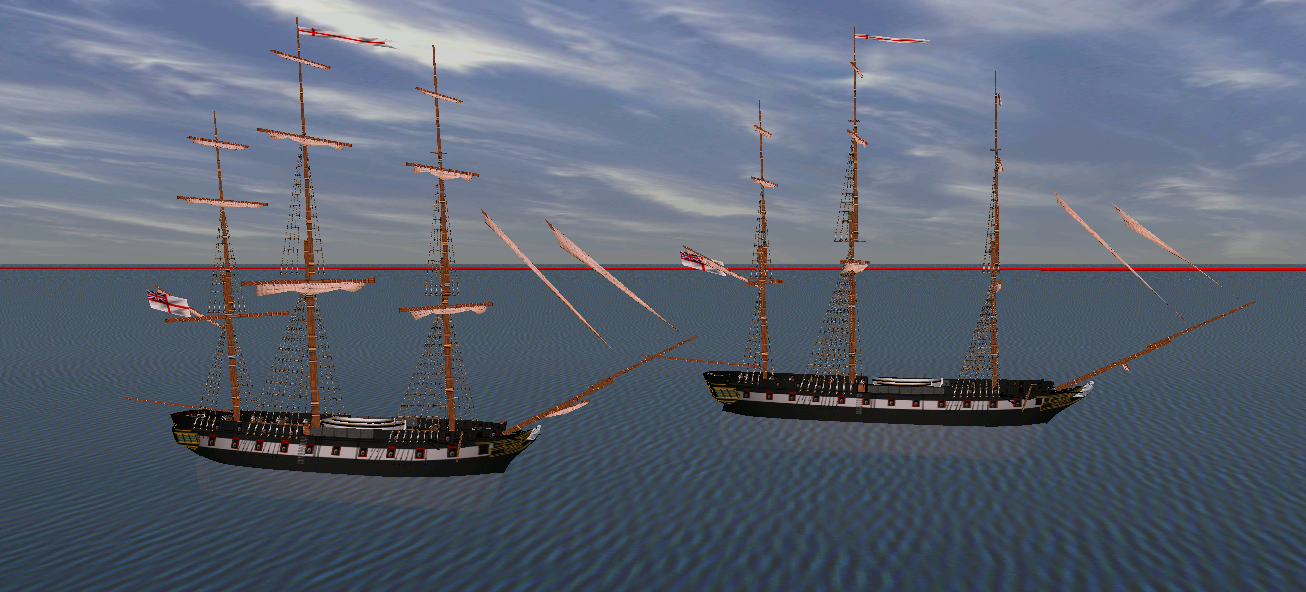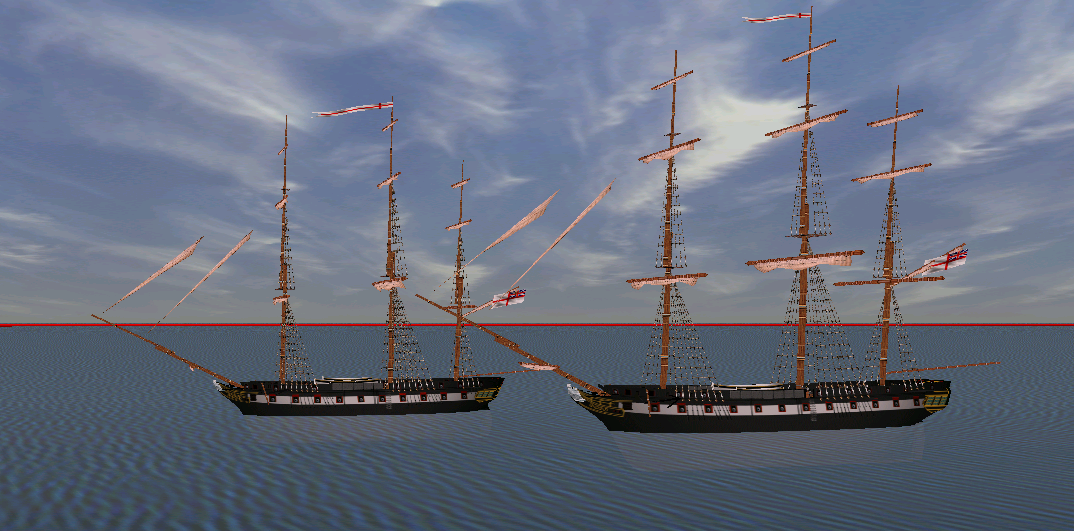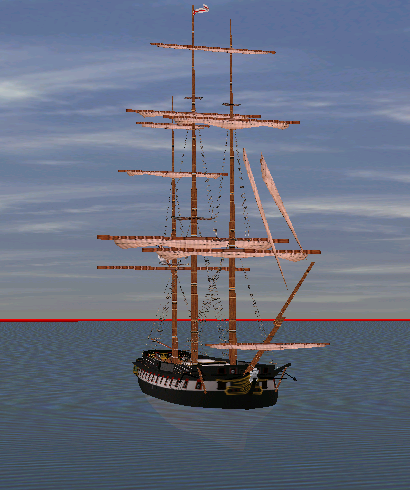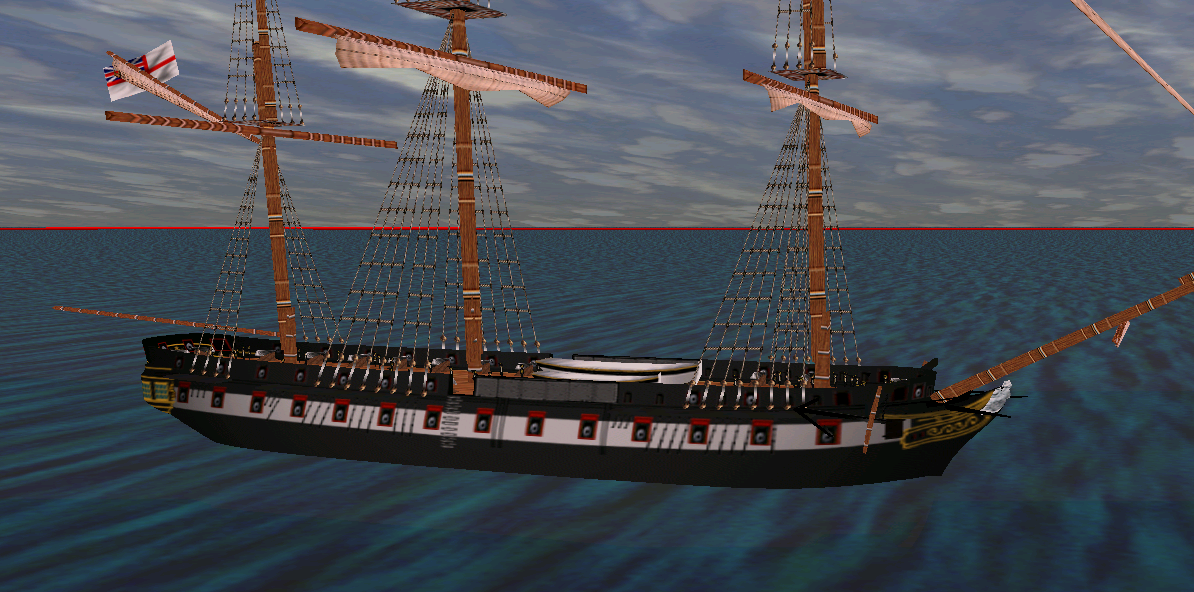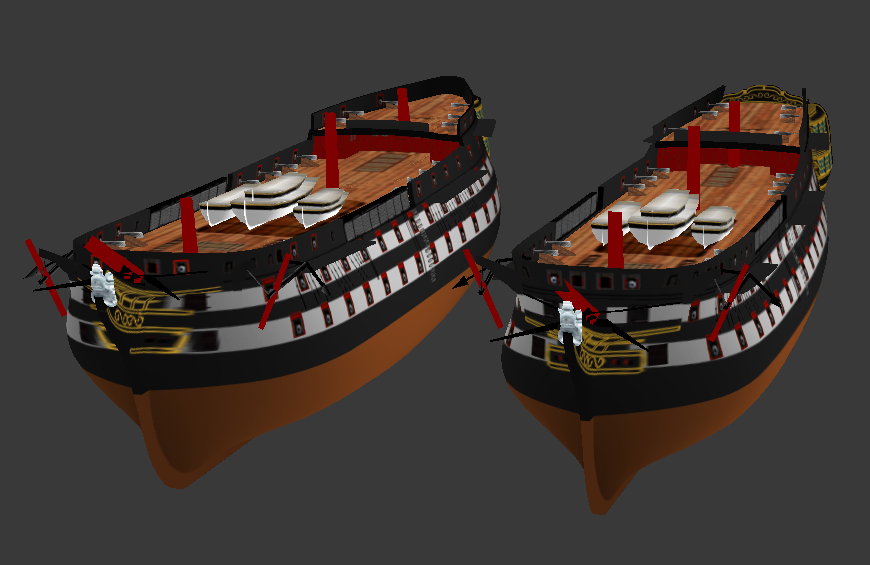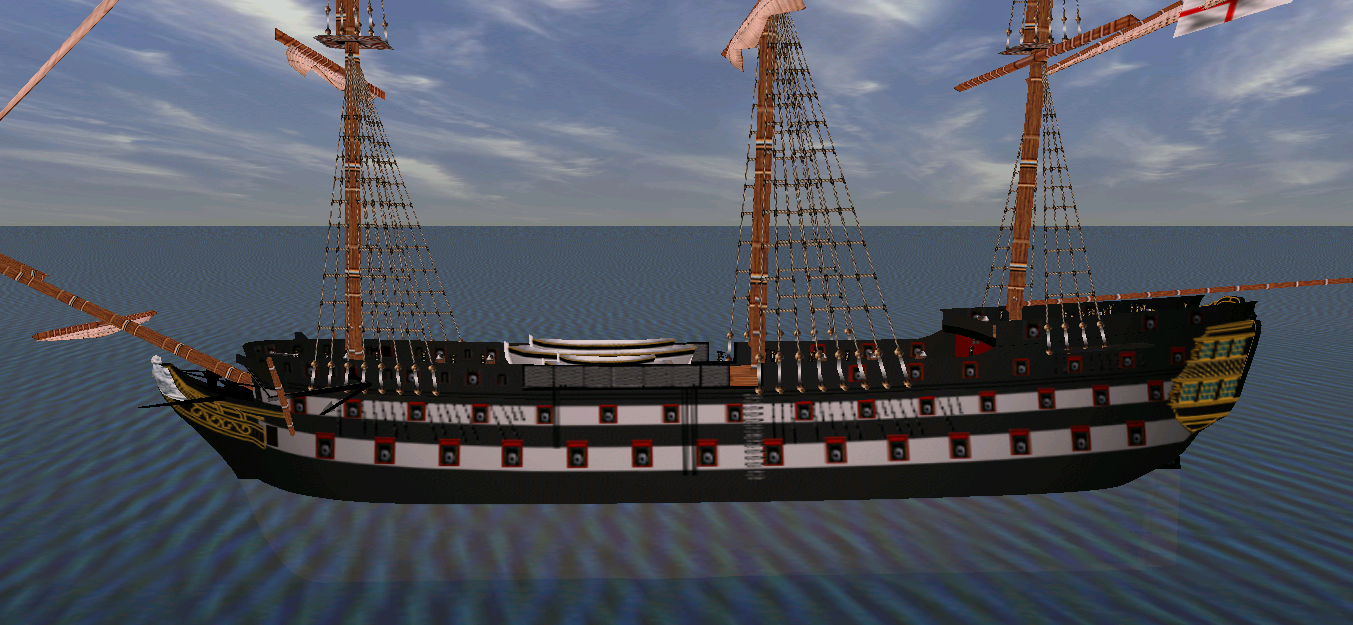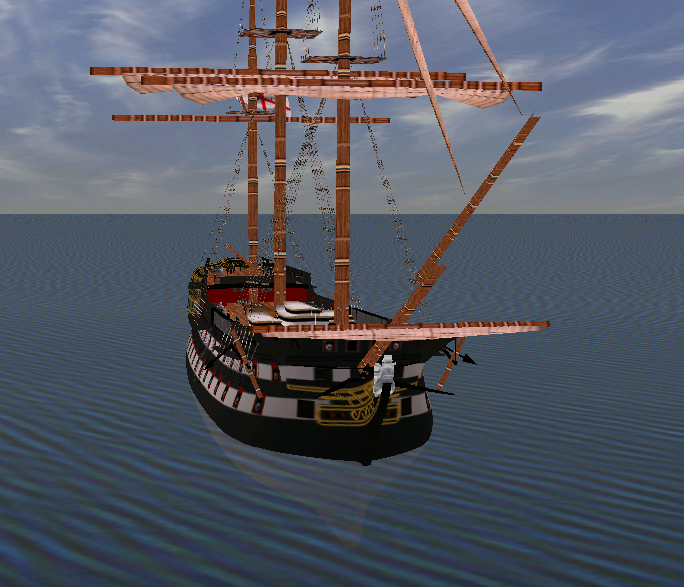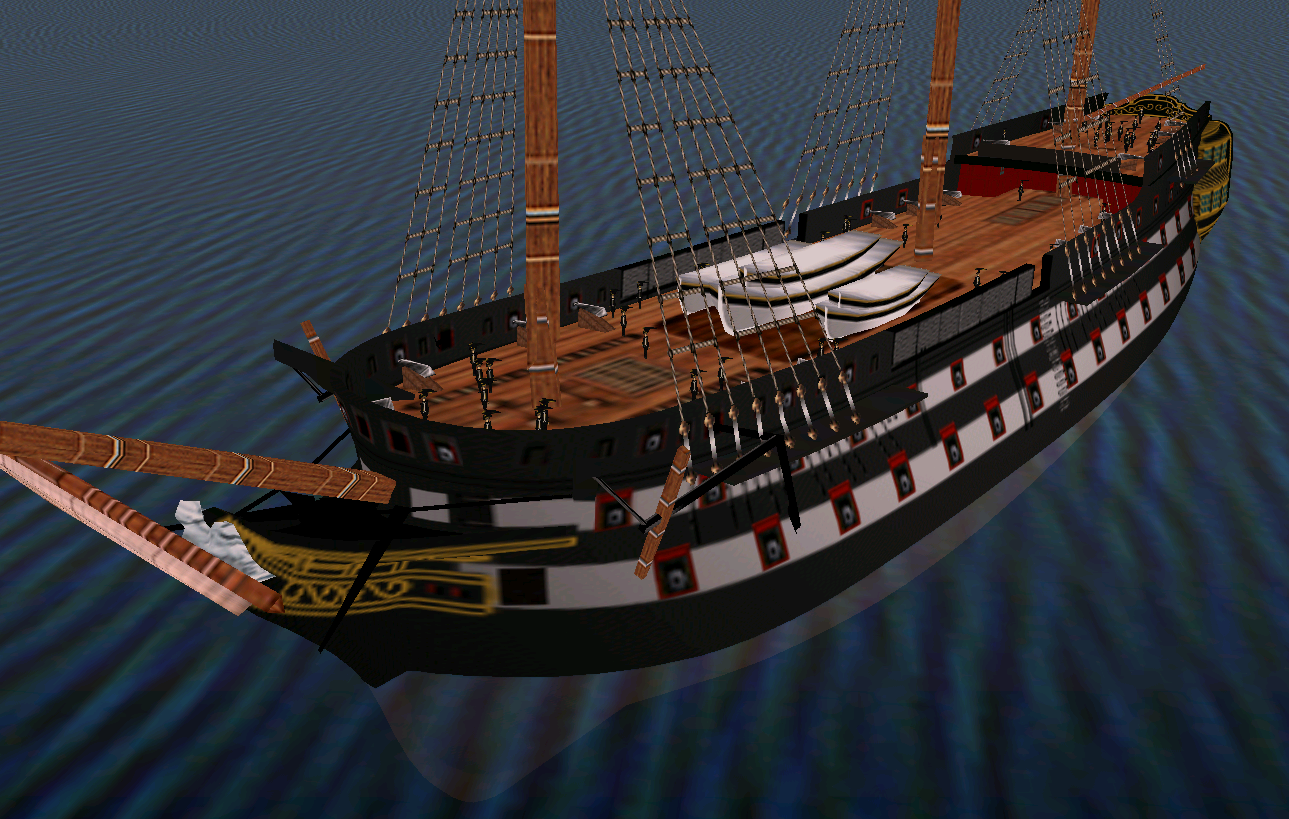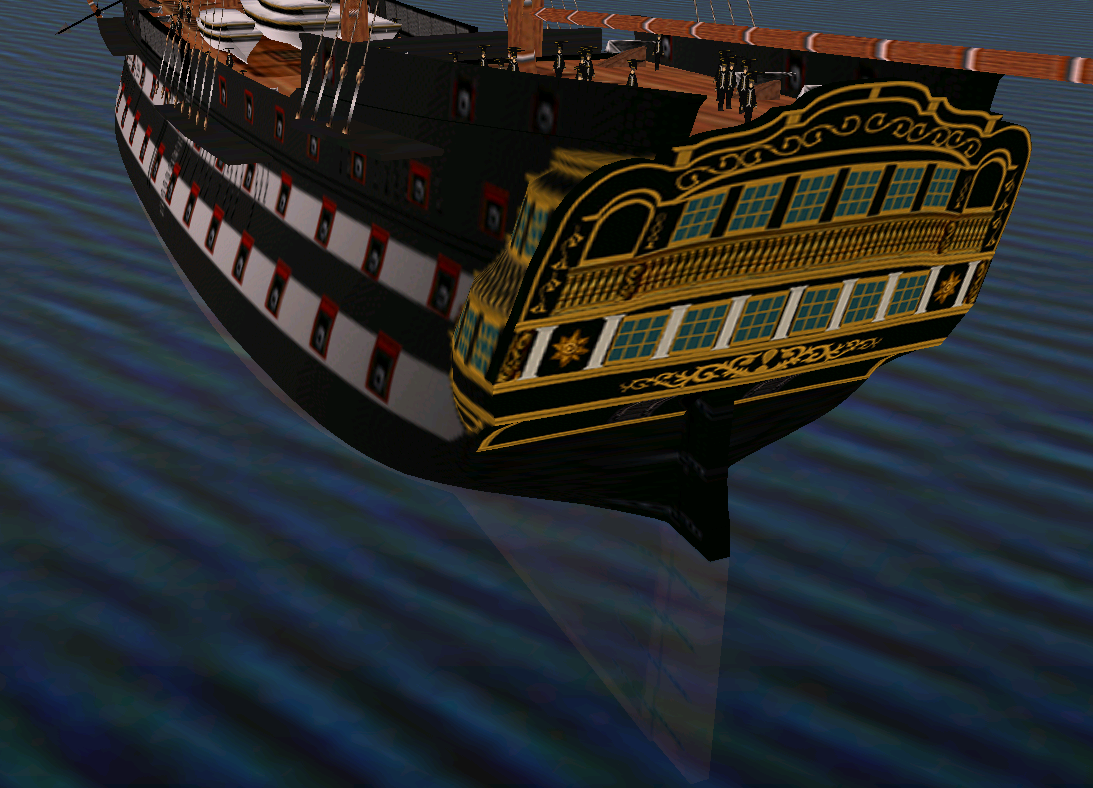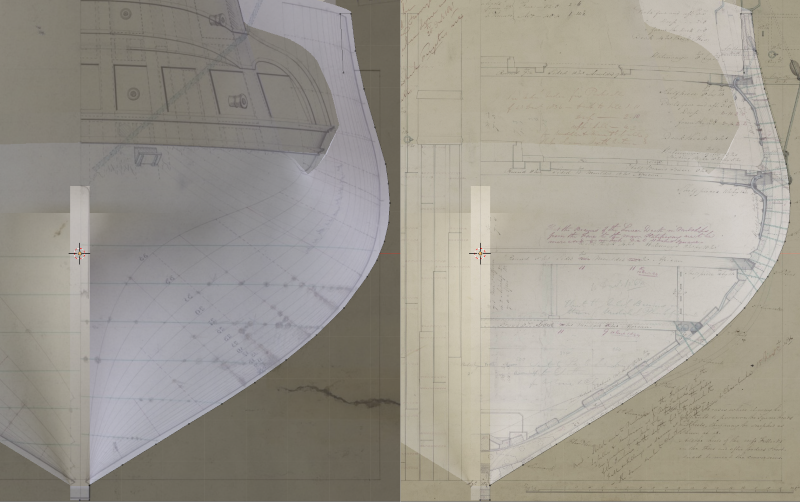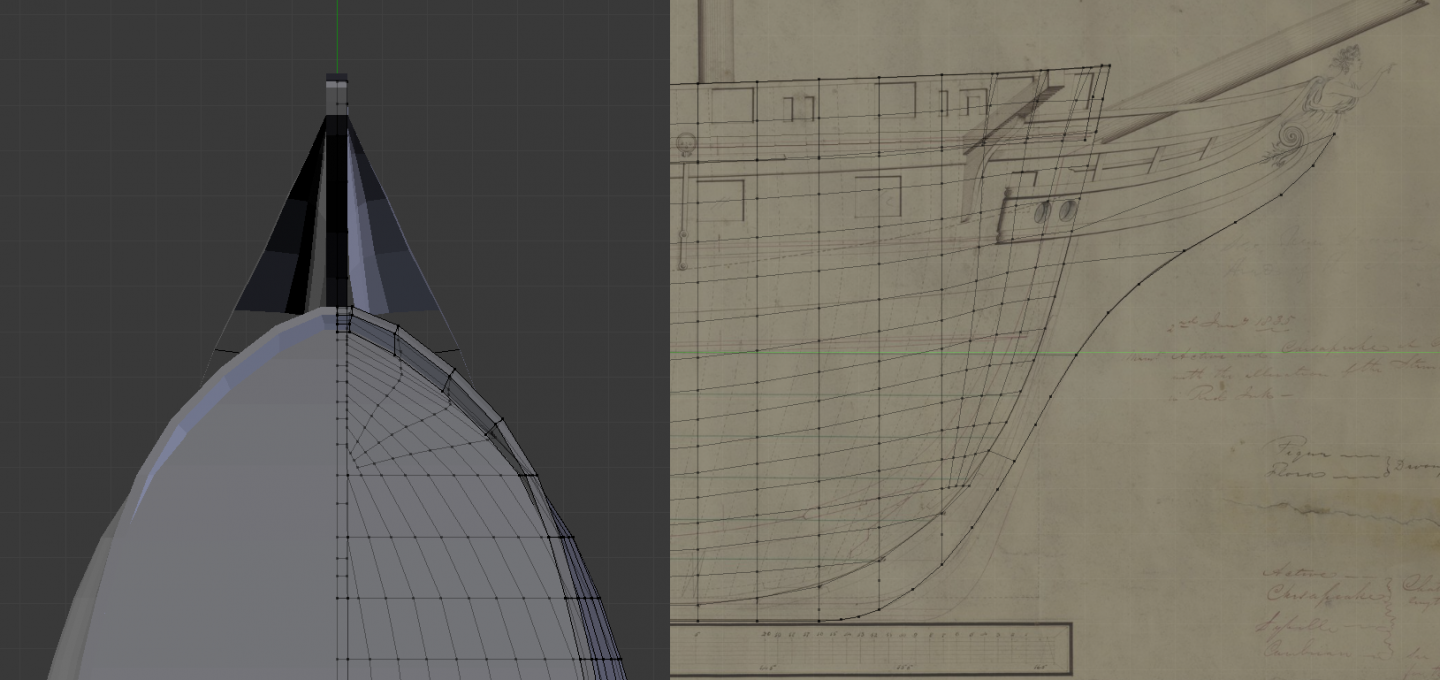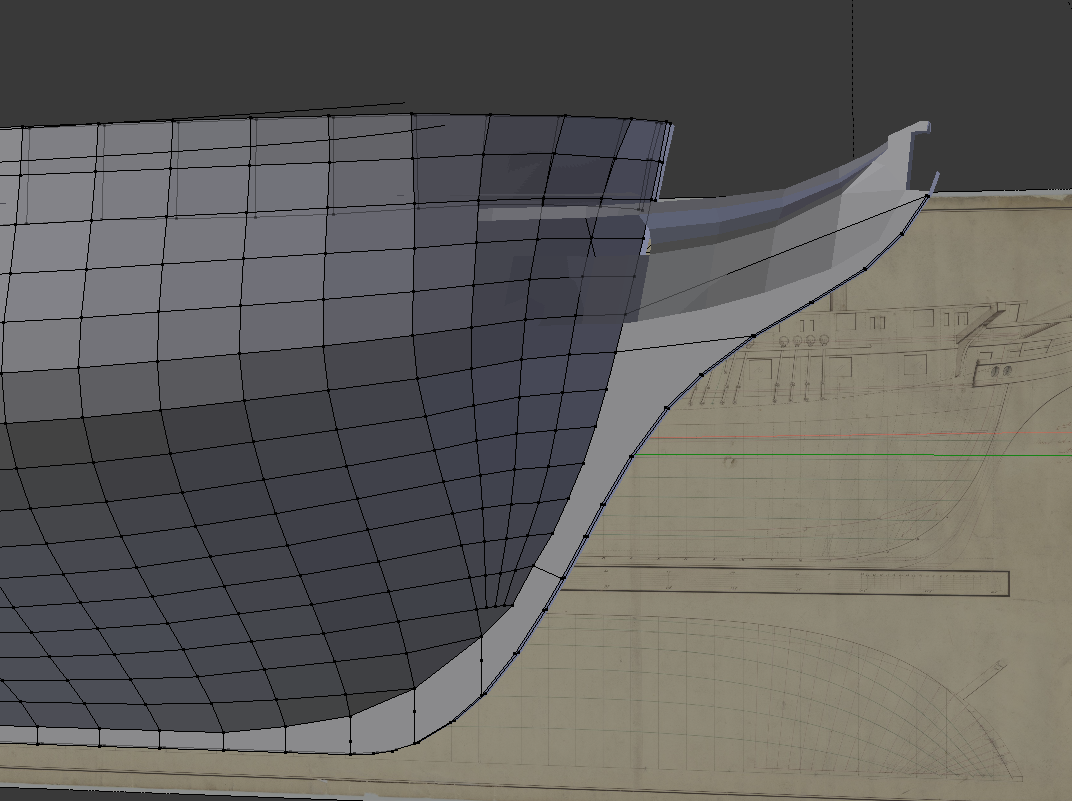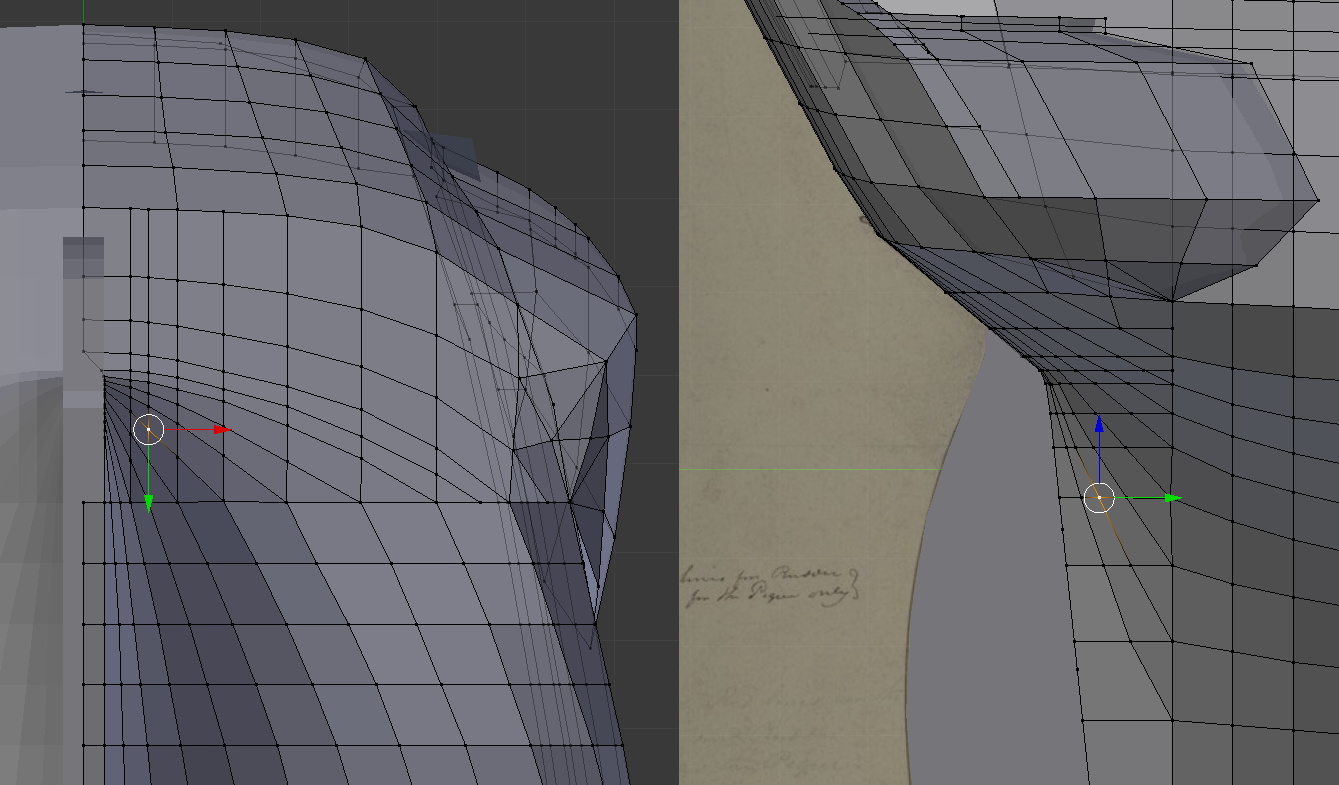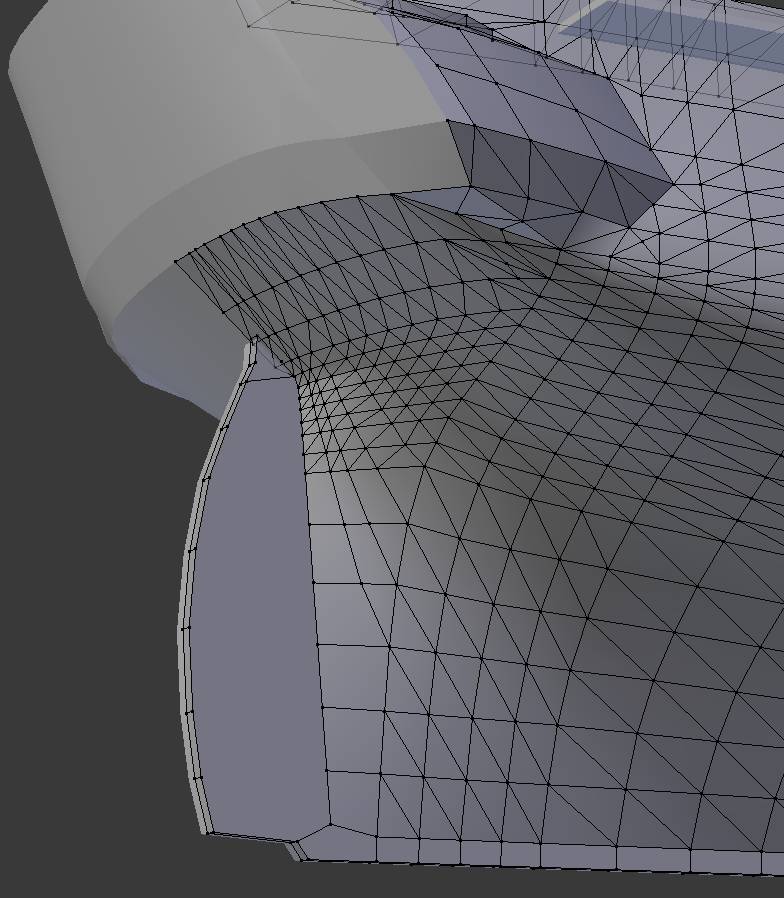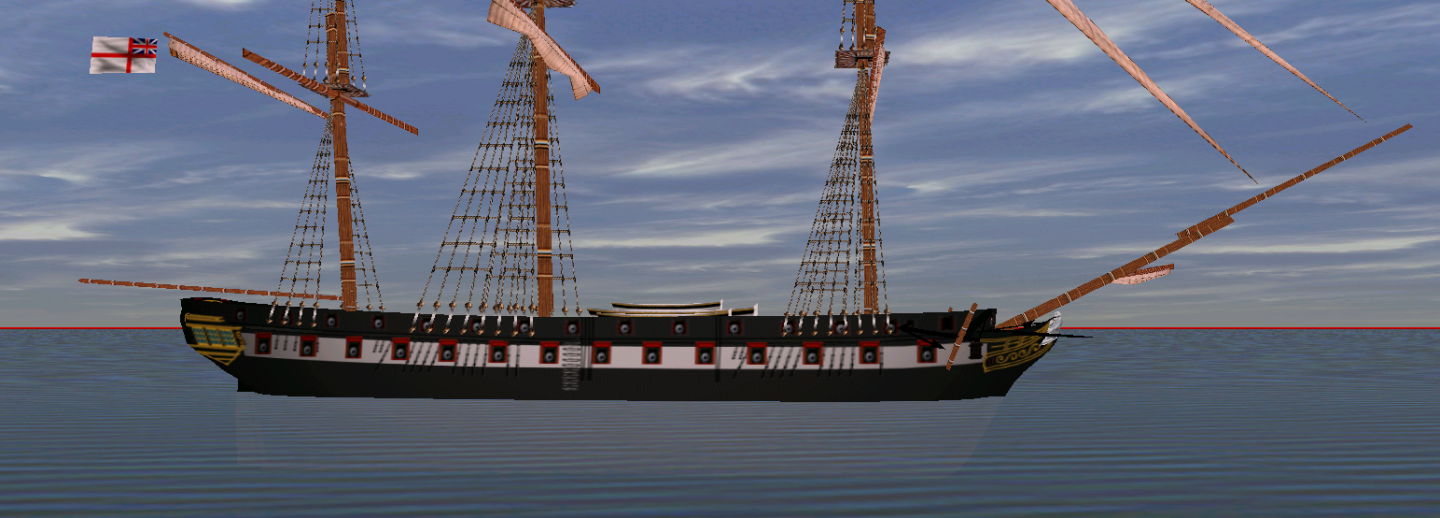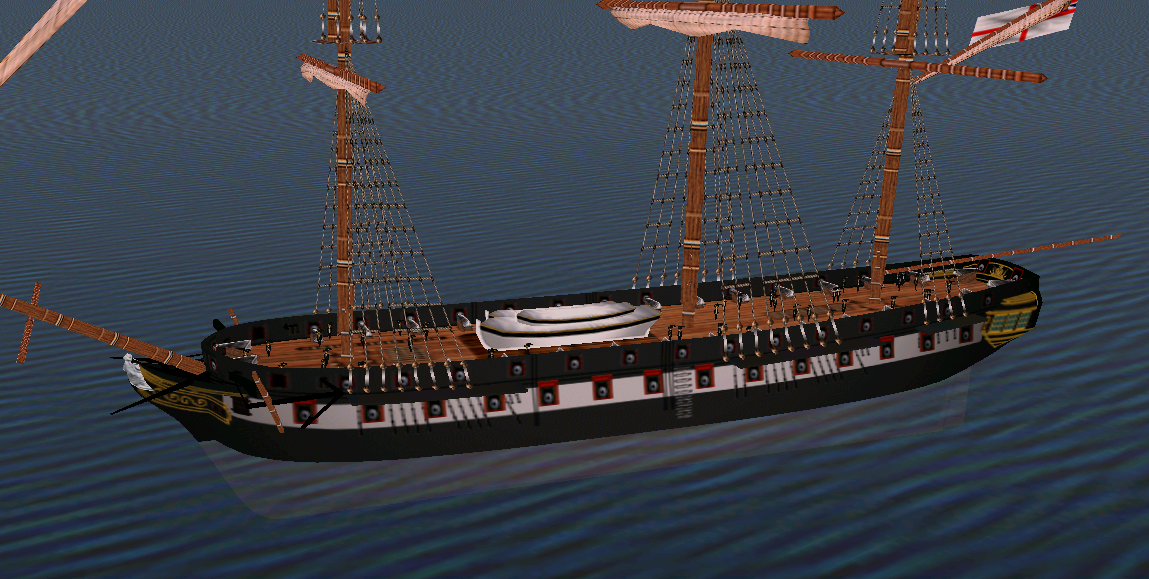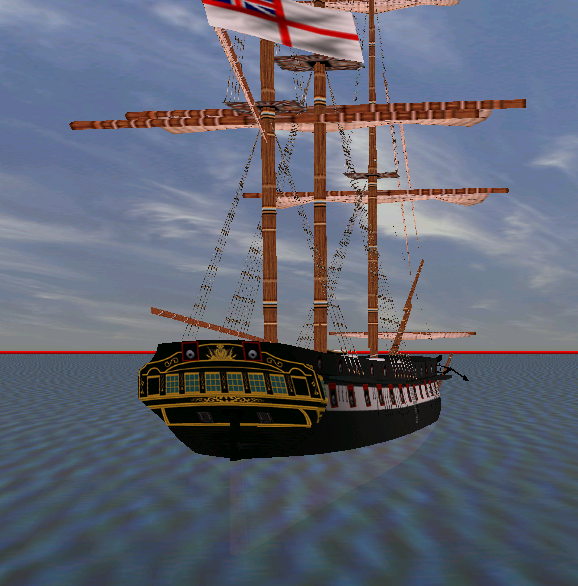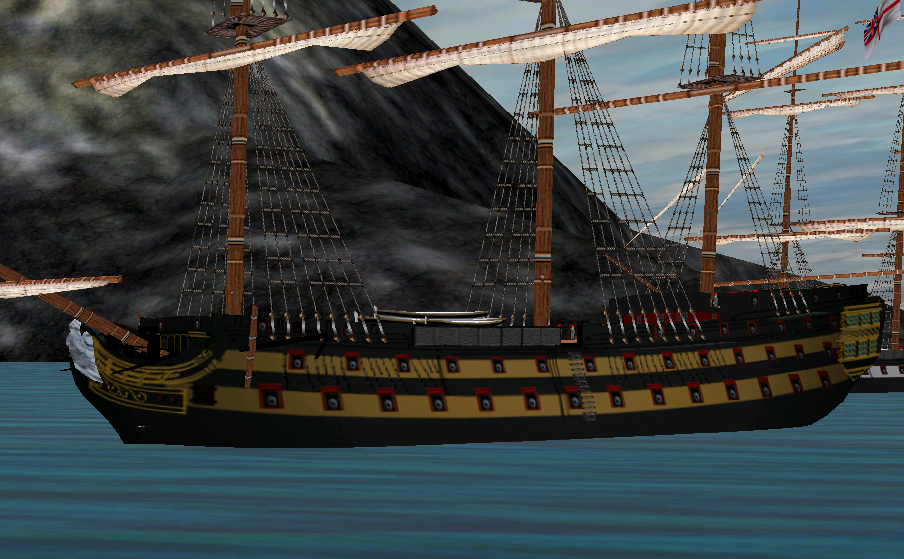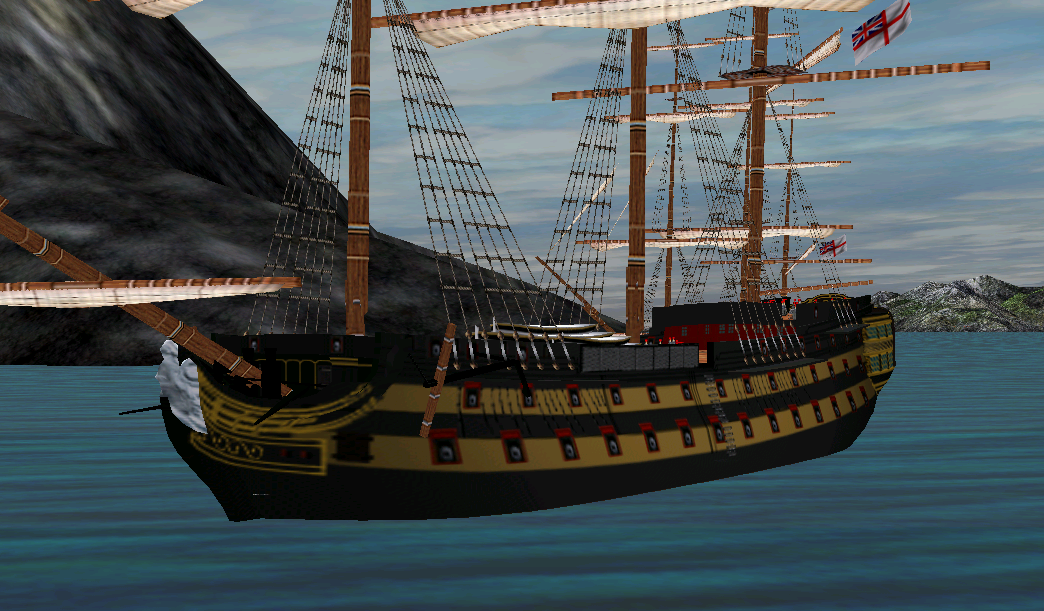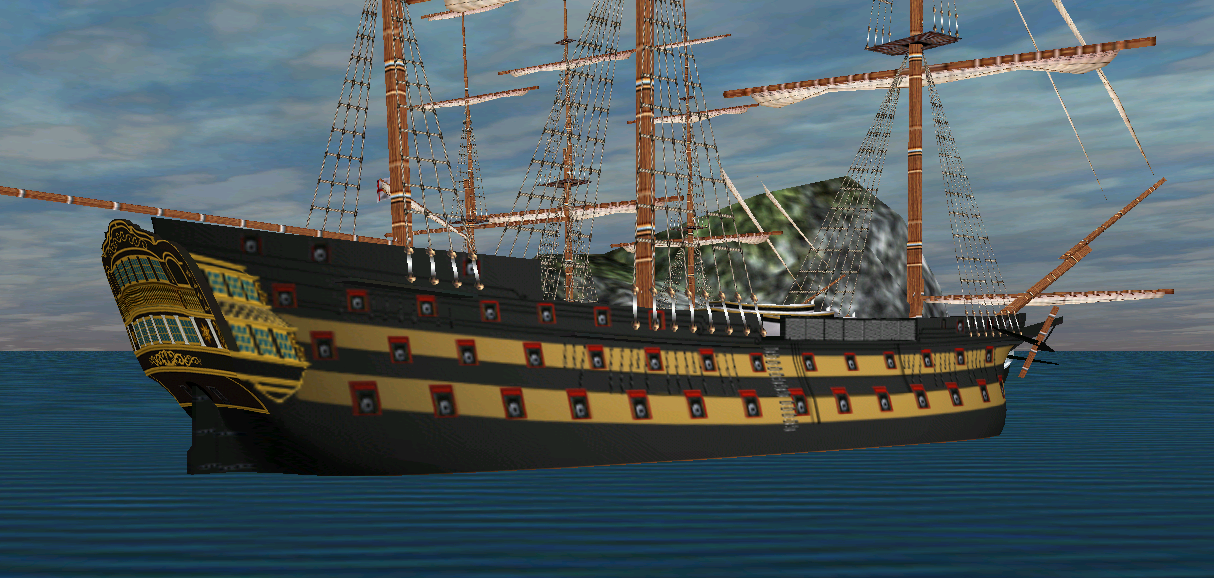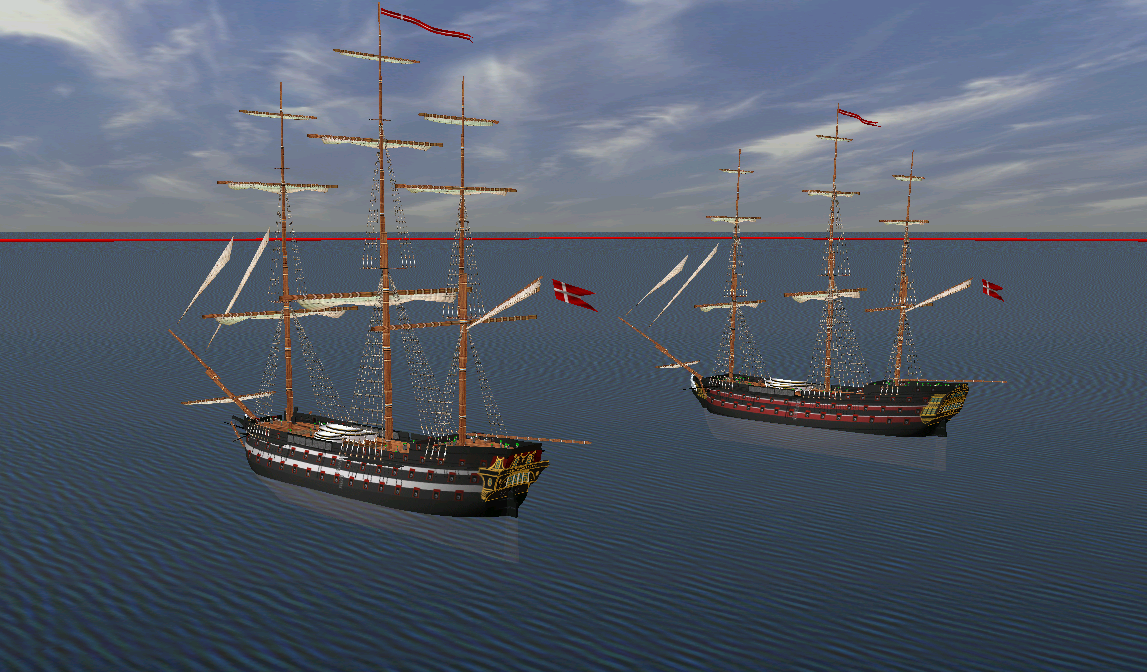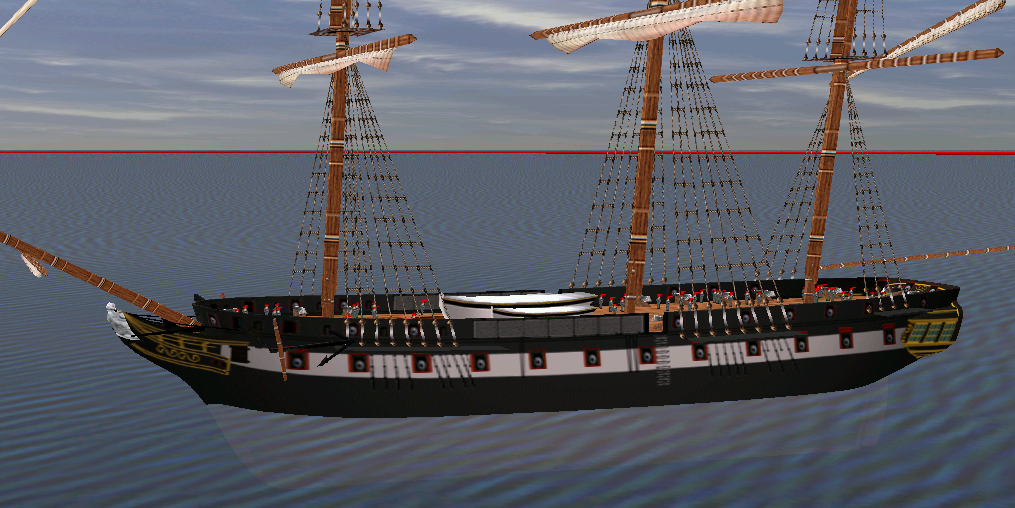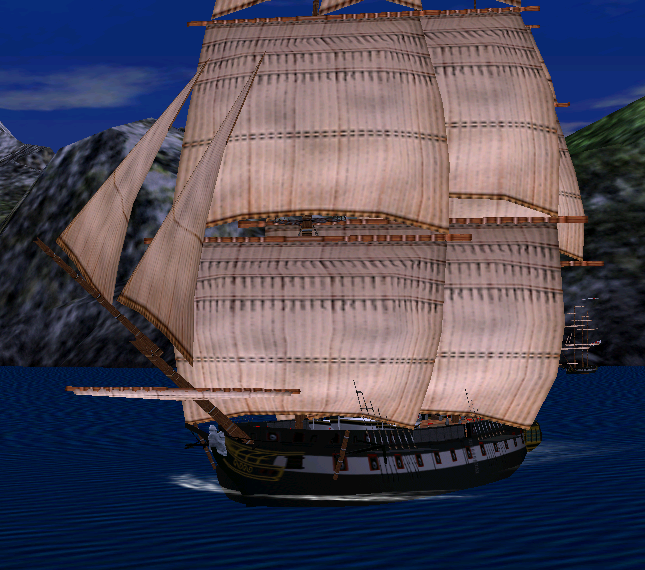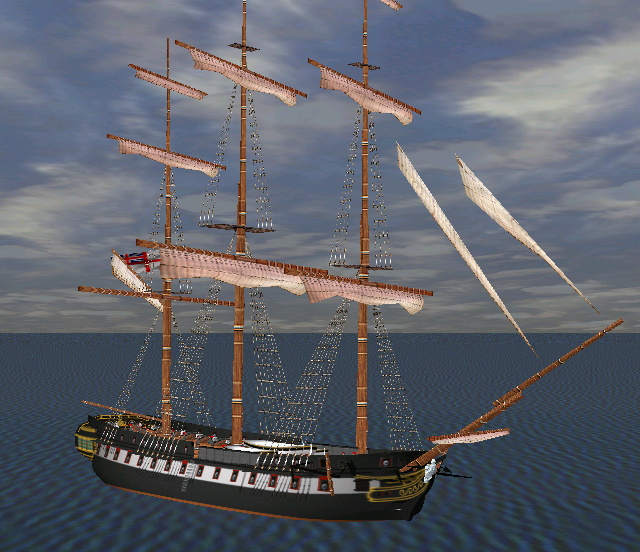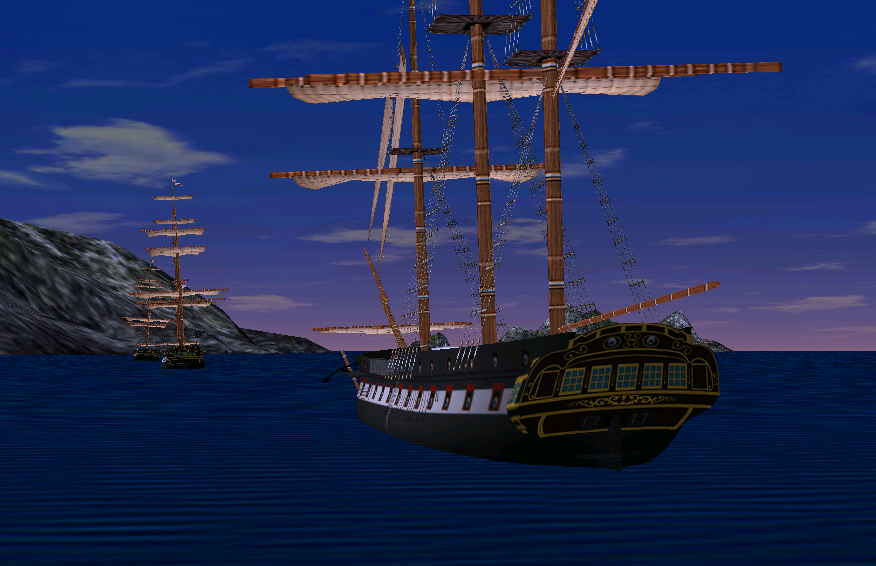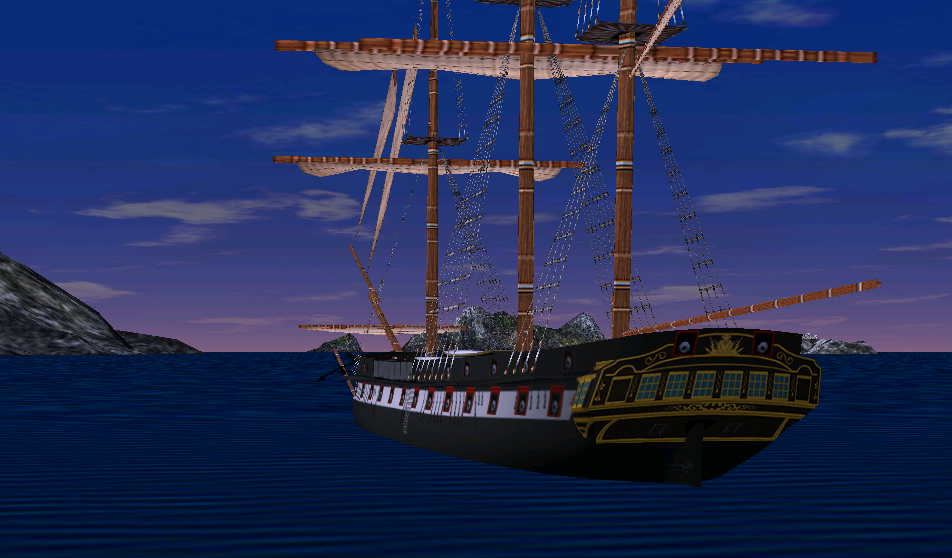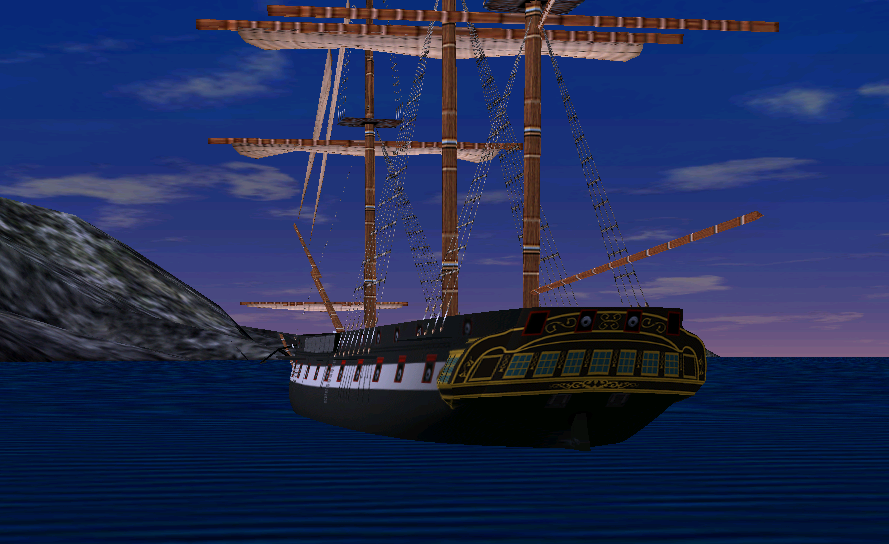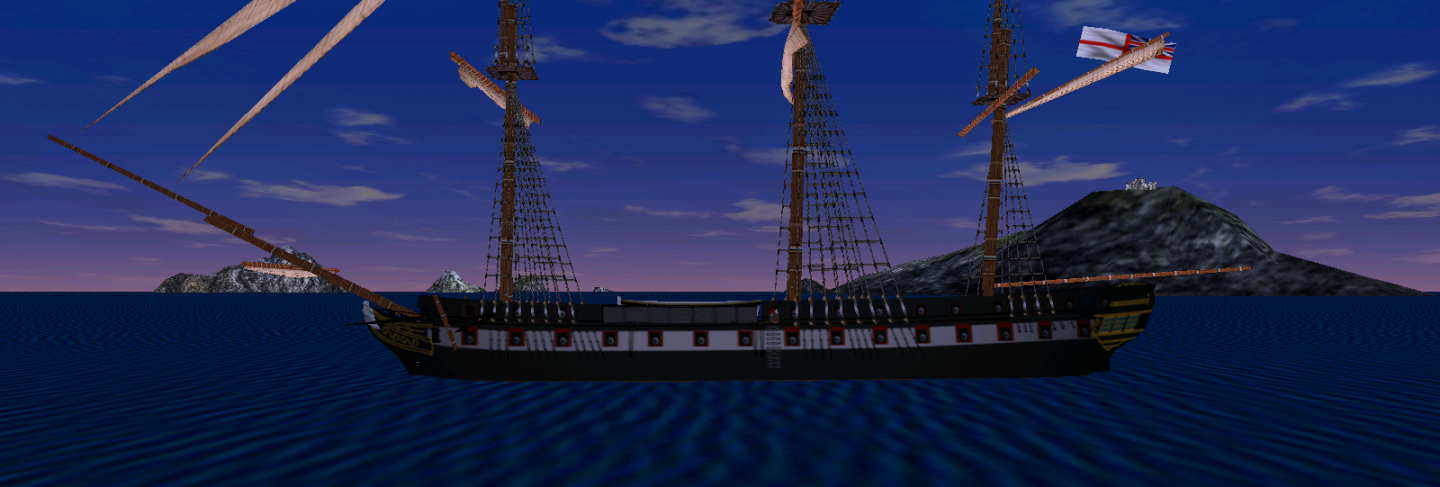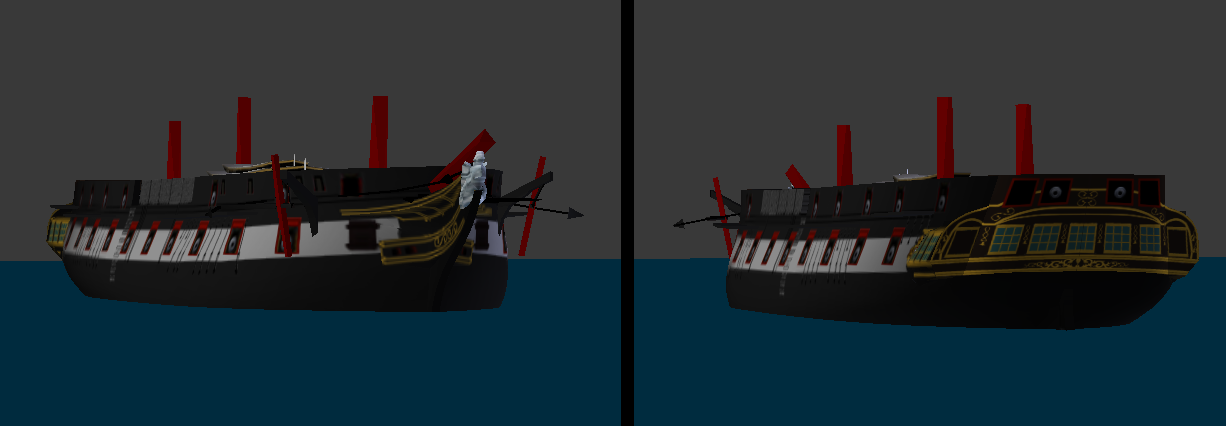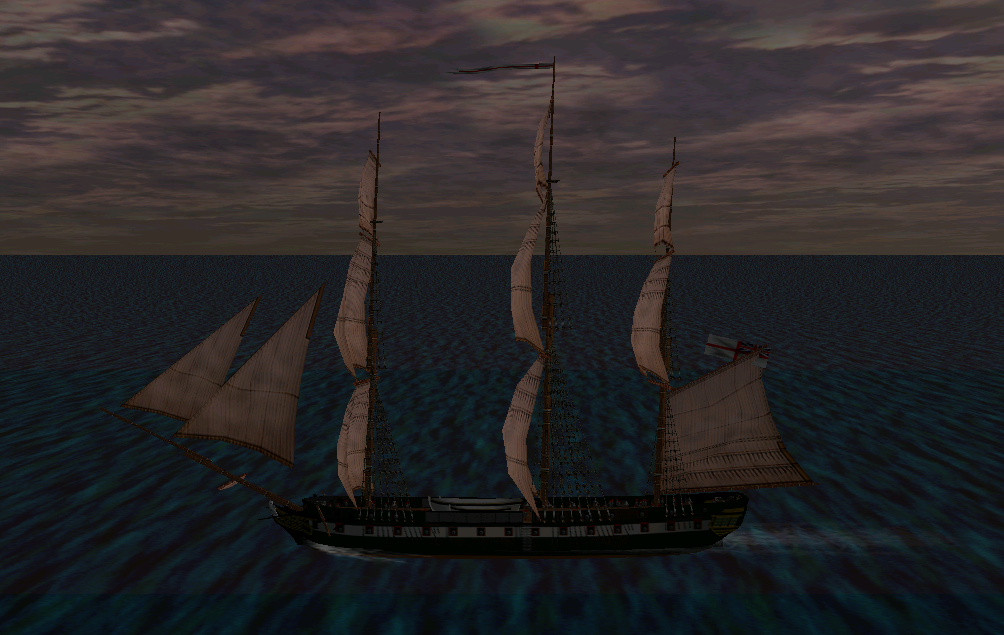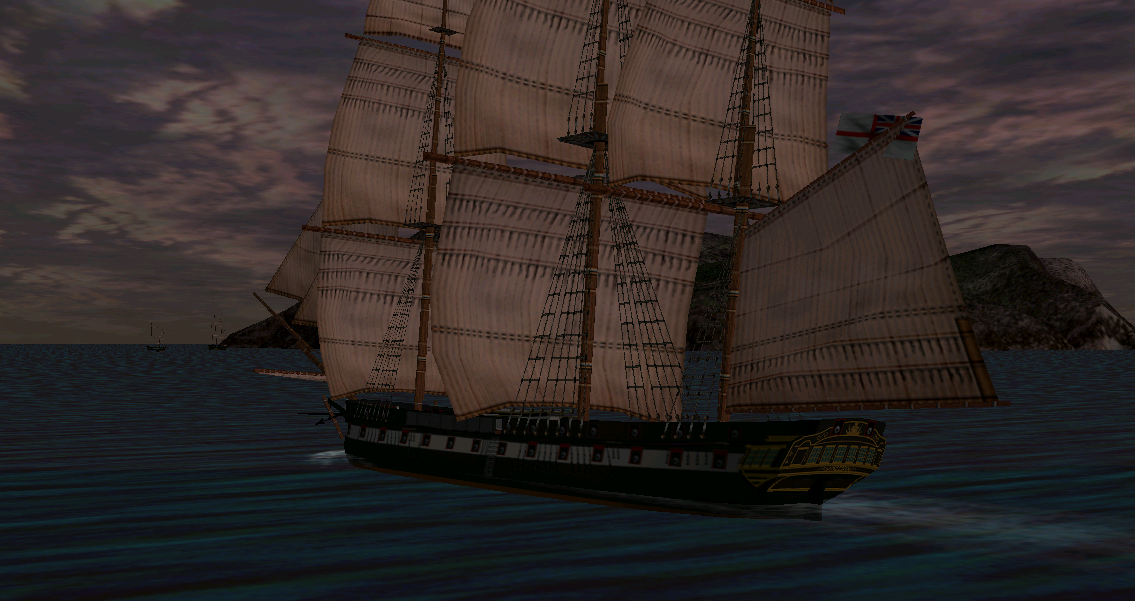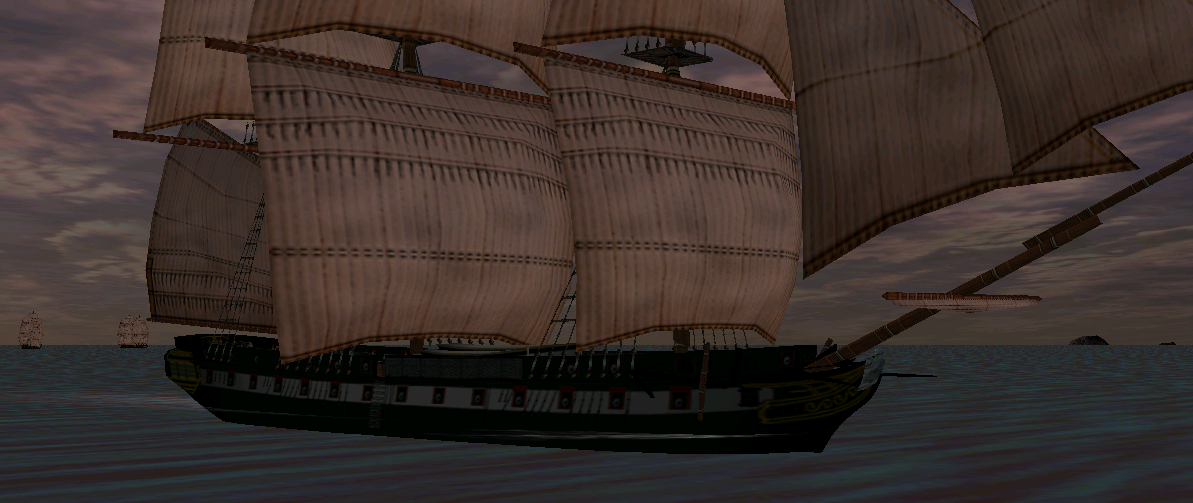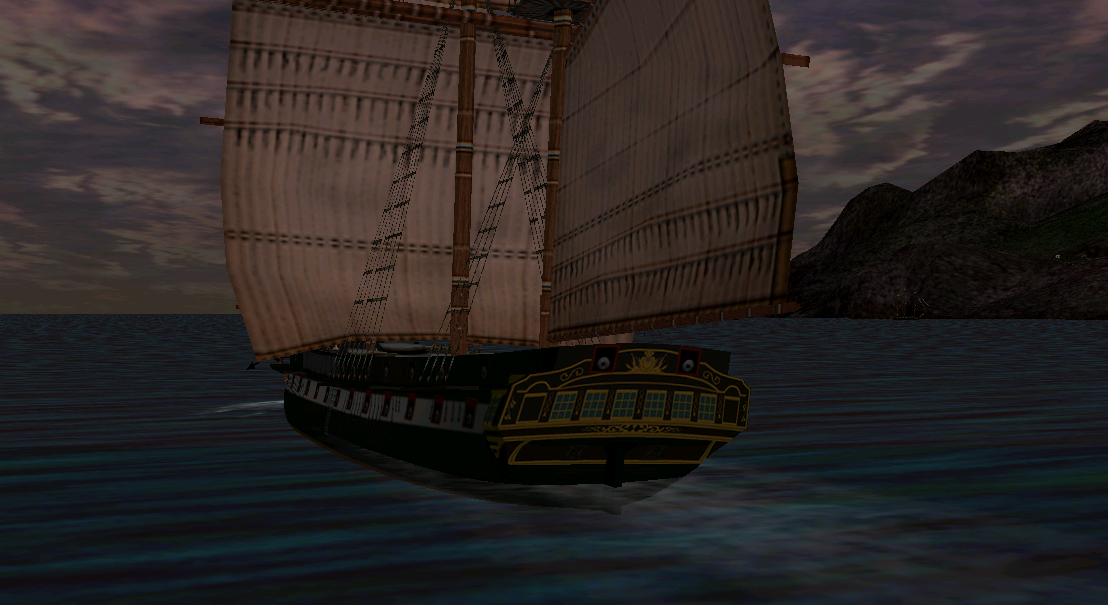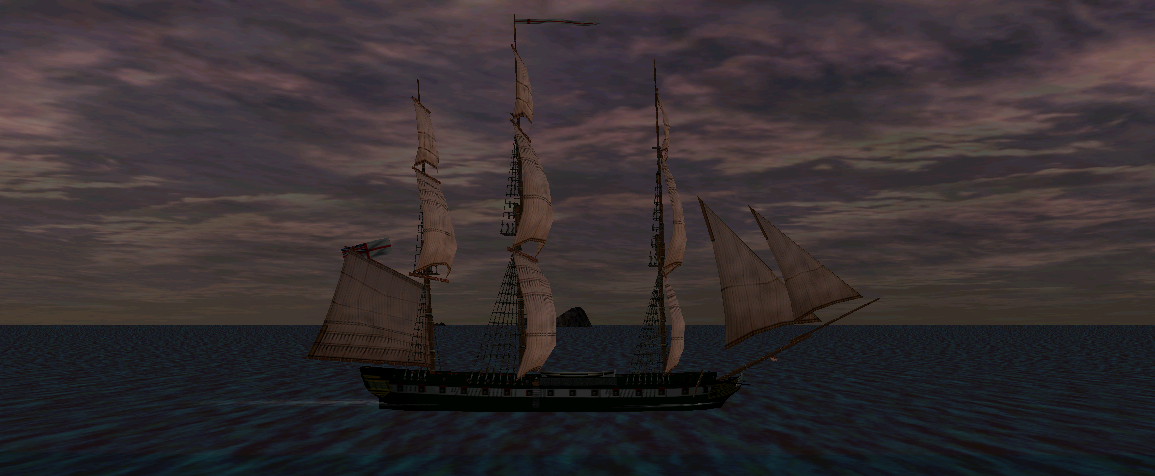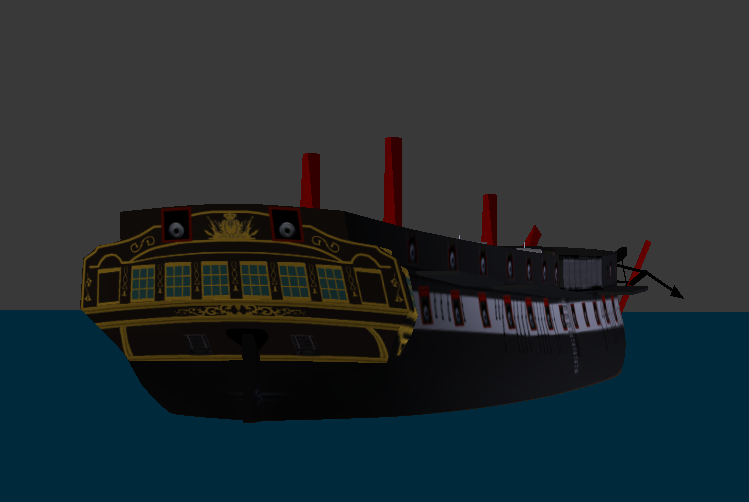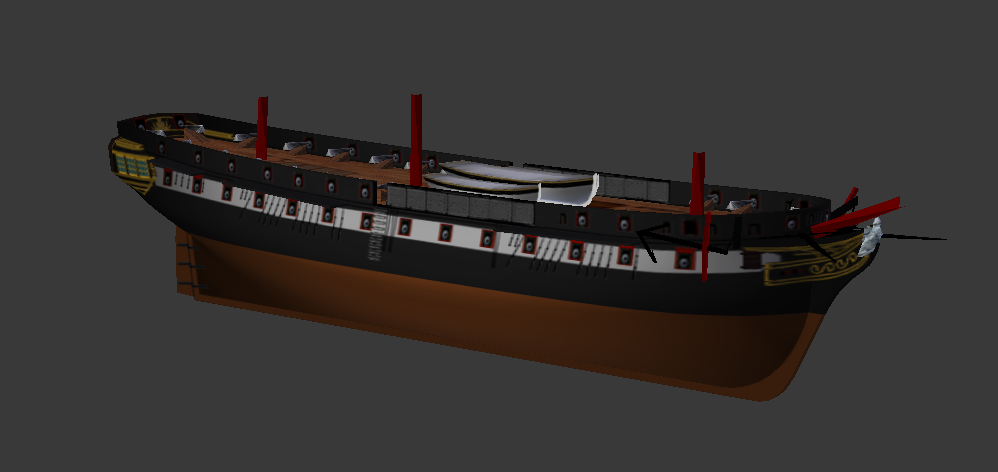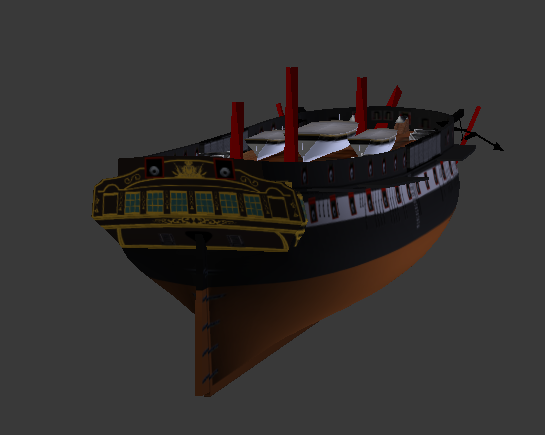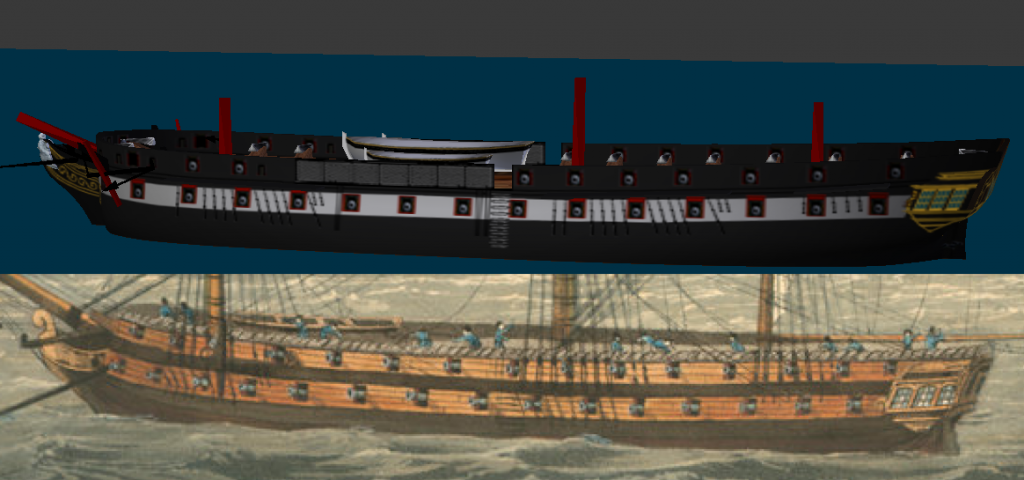-
Posts
973 -
Joined
Content Type
Profiles
Forums
Gallery
Events
Everything posted by Martes
-
Thanks The chosen style of virtual block models keeps the models simple enough to be able to finish them relatively quickly and be able to perceive the designs and the ways they developed one from the other, the evolution I find most fascinating. And they work, turn, sail and fire. Also, I am constantly tinkering with the ships until I am satisfied with their look or in case I find some new information or picture, and their appearance changes slightly from the posted screenshots, so here is a bunch of more updated screenshots (shallow and calm water allows to see the underwater forms):
-
The Albion is complete and tested under sail. Like all the ships from the period, she was somewhat difficult, because of the amount of modifications the class was subjected to. The gunports as depicted on the original plan did not match those on existing photographs of Aboukir and Exmouth, and were closer to later and slightly different Hannibal (and this was a source for endless frustration) but in the end I was able to find the specific plan for Exmouth with slightly altered scheme that did match the photographs. Phew. I did keep the original stern, though.
-
And to think that Britain could have had two preserved ships on a scale of Wasa...
-
It's complicated. As far as I recall, there were even some cases when a ship-sloop was "promoted" to a frigate along with her commander when he received a post-rank. For example, when James Lucas Yeo was ordered by Admiral Smith to bring word of Strangford's success to Britain, this led Yeo being named to the list of post-captains. Due to his rank, Confiance was reclassified as a post-ship. And later reverted back, so the classification was very contextual. Brig-sloops and ship-sloops referred only to the rigging, the rate of the ship in this case remained the same. Cruizer with 2 masts would be referred as a brig-sloop, and with 3 - a ship-sloop. There was also a difference between flush-decked (with no covered gun deck) and quarterdecked (miniature frigate) sloops, but, again, this did not affect the rate of the ship in British classification. The only difference, brig-rigged sloop couldn't become a frigate, while a ship-rigged could under certain circumstances.
-
Another ship in my "monstrous frigate" series: the HMS Vernon (1832): Considered at that time an experimental frigate, she was very large (similar in size to 80-gun ship), and one of the first to be constructed with some ergonomics in mind (space between decks increased to 7 feet, for example), and carried her guns at 10 feet above the waterline. The stern is also interesting - it's actually an extended round (elliptic) construction with a very conservative sternboard attached to it to make the appearance more classic. I have a weakness for the works of William Symonds, apparently.
-
And I went into rebuilding the 74 for a reason. I used the Vindictive plans on the hull of the Colossus (which will explain a slightly different gunport arrangement and a straight stem). The elaborate semi-elliptic stern with hanging quarter galleries is especially interesting. So we have a frigate of a size of a battleship, with comparable armament, built to 1830's specification over a hull with lines designed in 1740's. Lacks only steam engine for complete madness, and even that's not impossible. For me it was a long dream, to actually and properly razee something Interesting, that most of the large post-war British frigates, starting with the Vernon, were, more or less, similar to those converted frigates, both in size and in armament, as if the Admiralty, after long decades got the idea that it just may be easier to design a large frigate from the beginning, than to build a two-decker and then cut it.
-
For what it's worth I can show how I do it. First, check if the drawings in the book include the planking - the original drawings usually do not, they show the shape of the frames, so you have to keep additional foot or so in mind. Then select a number of vertices for the frame curve (I use around 16 for a frigate, and then subdivide the edges where I need more exact curve - I'll show it later) and keep it the same for all stations you take from the drawing. Keep them flat - i.e. do not move any vertex forward-aft, only inside or outside, and when finished forming the shape, make them evenly distanced (there is a "space" function in loop tools in Blender, although I don't know how it is invoked in 3dmax, but there certainly should be something). Now, at the bow it's a little bit tricky, but still manageable. You take the last station from the line plan, place it along the stem line, and flatten it over the keel. Space the vertices. Then you take the station and the stem line and bridge them over with 3-4 segments. Then, using the horizontal plan view of the ship, you adjust those vertices a little outside, and space each of the lines once again. It takes some manual work, but you should get it right in the end. Remember, though, to constrain the movement of the vertices to single axis, it will save a lot of confusion. The sterns are tricky as well, since there are very little lines of them given, usually. So I generally also take the last station of the hull, and then extend it horizontally aft, cut over the sternpost, flatten, then cut vertically from each vertex of the last station - and then adjust the intersection vertices horizontally (only fore-aft) to get the smoother shape of the stern according to the plan. The image shows an elliptical stern of the Pique, but earlier ships work the same (and were actually built in this way), only the lines will end at the transom. When it's all done, you can smooth over the curves by subdividing them and triangulate if required:
-
Finally got around to finish my interpretation of the Prince Regent: Under construction And in game It is, essentially, the same hull as the Forte with only differences being a spar deck, different gun and boat arrangements and slightly different stern board, and she looks very realistic to me. Much more so than the first attempts in this thread anyway. Slightly overgunned, but they didn't care for range there, so that might not have been much of a problem. For the final variant I applied a standard frigate paint scheme with single stripe - the upper stripe, interestingly looking as it is, appears only on one drawing of 3 different pictures of the ship I found, so it might have been a fluke or existed for only a short time.
-
And a minor update for the 74-gun ship model: Doors and decorations on the beakhead Fixed the stern decoration rails (there was a small offset between side and stern texture, and that's gone), transom curve and hull curve under the forecastle It should be noted, though, the model is still done to older standard and will be eventually rebuilt, but, I guess, visually it will be very hard to notice.
About us
Modelshipworld - Advancing Ship Modeling through Research
SSL Secured
Your security is important for us so this Website is SSL-Secured
NRG Mailing Address
Nautical Research Guild
237 South Lincoln Street
Westmont IL, 60559-1917
Model Ship World ® and the MSW logo are Registered Trademarks, and belong to the Nautical Research Guild (United States Patent and Trademark Office: No. 6,929,264 & No. 6,929,274, registered Dec. 20, 2022)
Helpful Links
About the NRG
If you enjoy building ship models that are historically accurate as well as beautiful, then The Nautical Research Guild (NRG) is just right for you.
The Guild is a non-profit educational organization whose mission is to “Advance Ship Modeling Through Research”. We provide support to our members in their efforts to raise the quality of their model ships.
The Nautical Research Guild has published our world-renowned quarterly magazine, The Nautical Research Journal, since 1955. The pages of the Journal are full of articles by accomplished ship modelers who show you how they create those exquisite details on their models, and by maritime historians who show you the correct details to build. The Journal is available in both print and digital editions. Go to the NRG web site (www.thenrg.org) to download a complimentary digital copy of the Journal. The NRG also publishes plan sets, books and compilations of back issues of the Journal and the former Ships in Scale and Model Ship Builder magazines.


